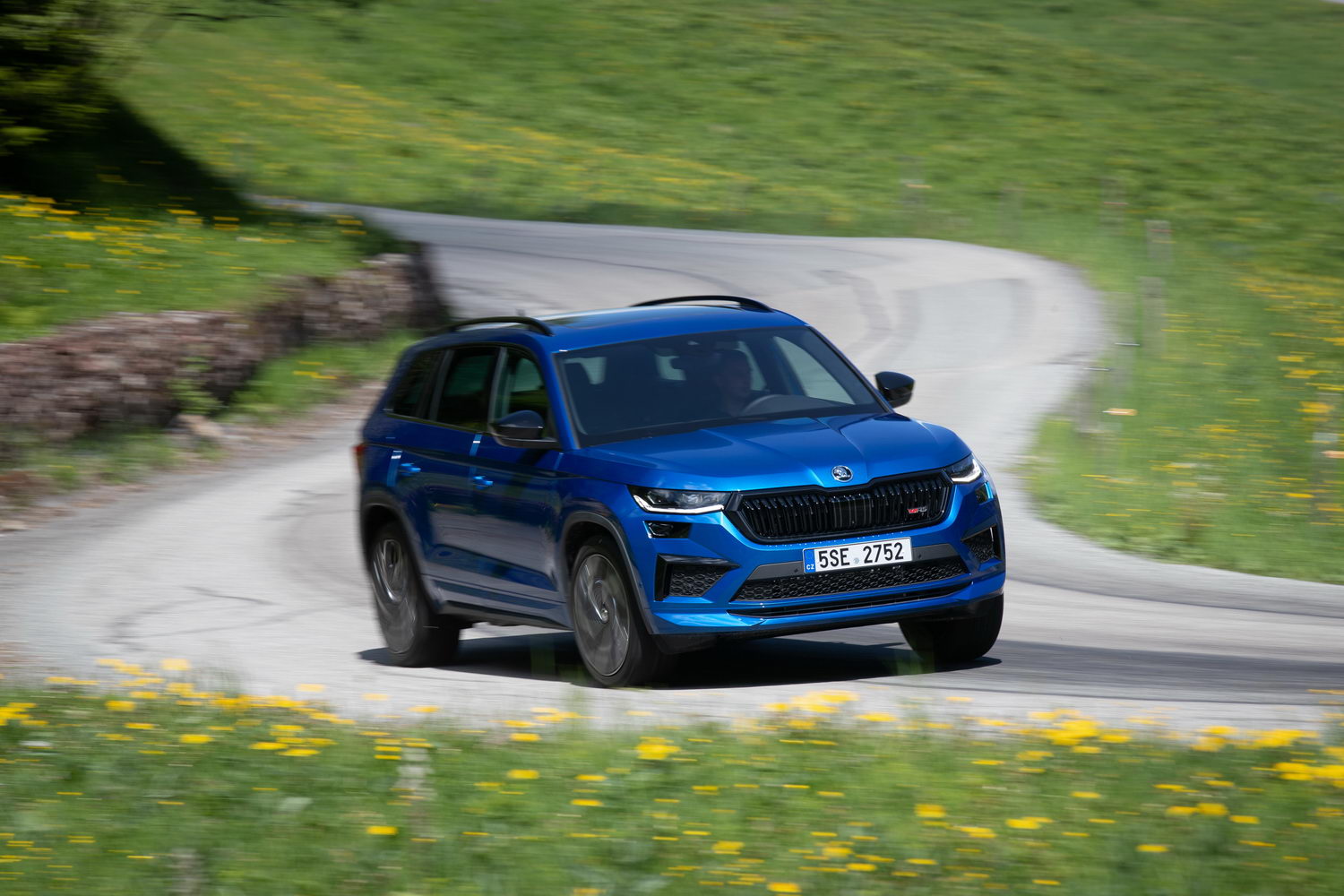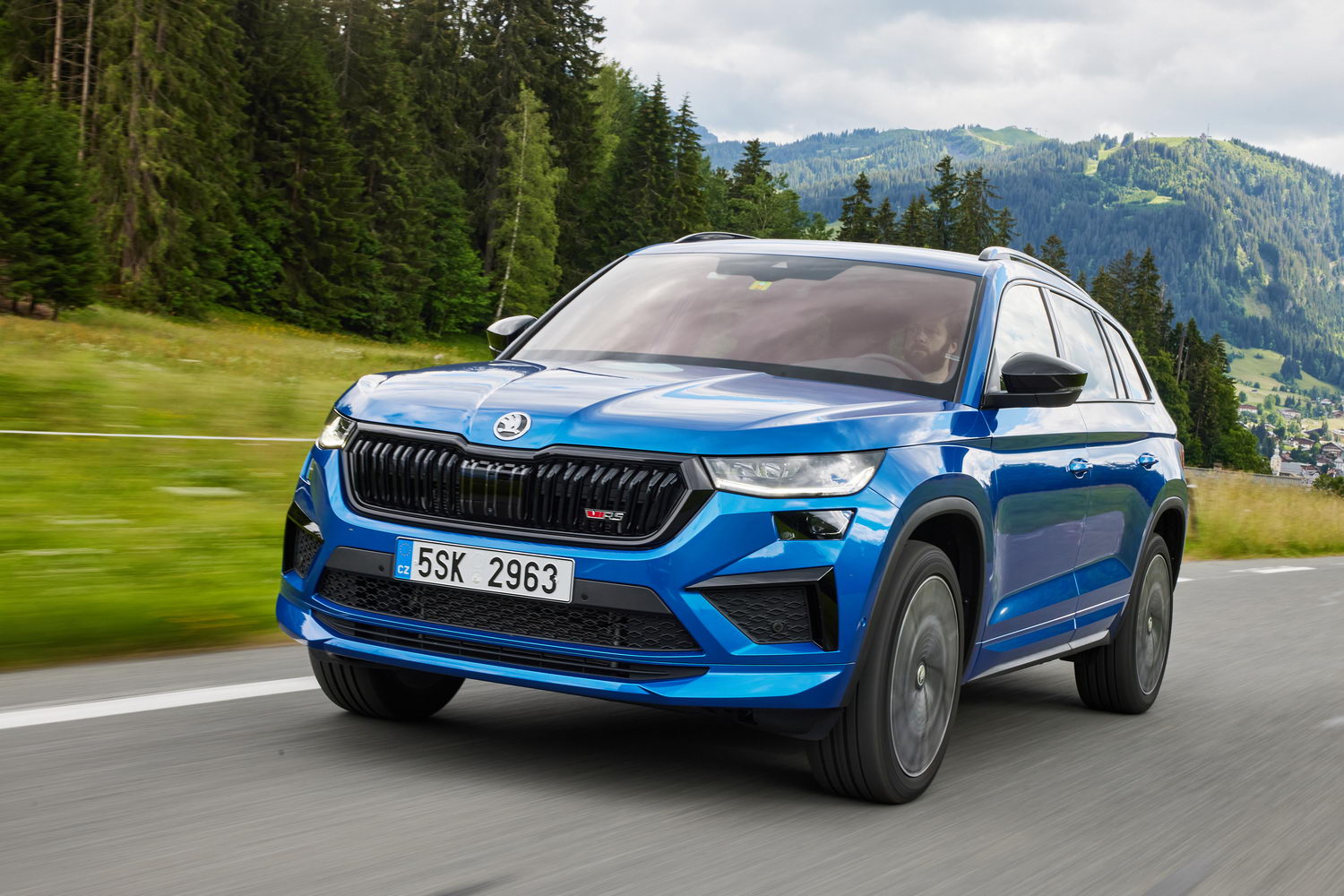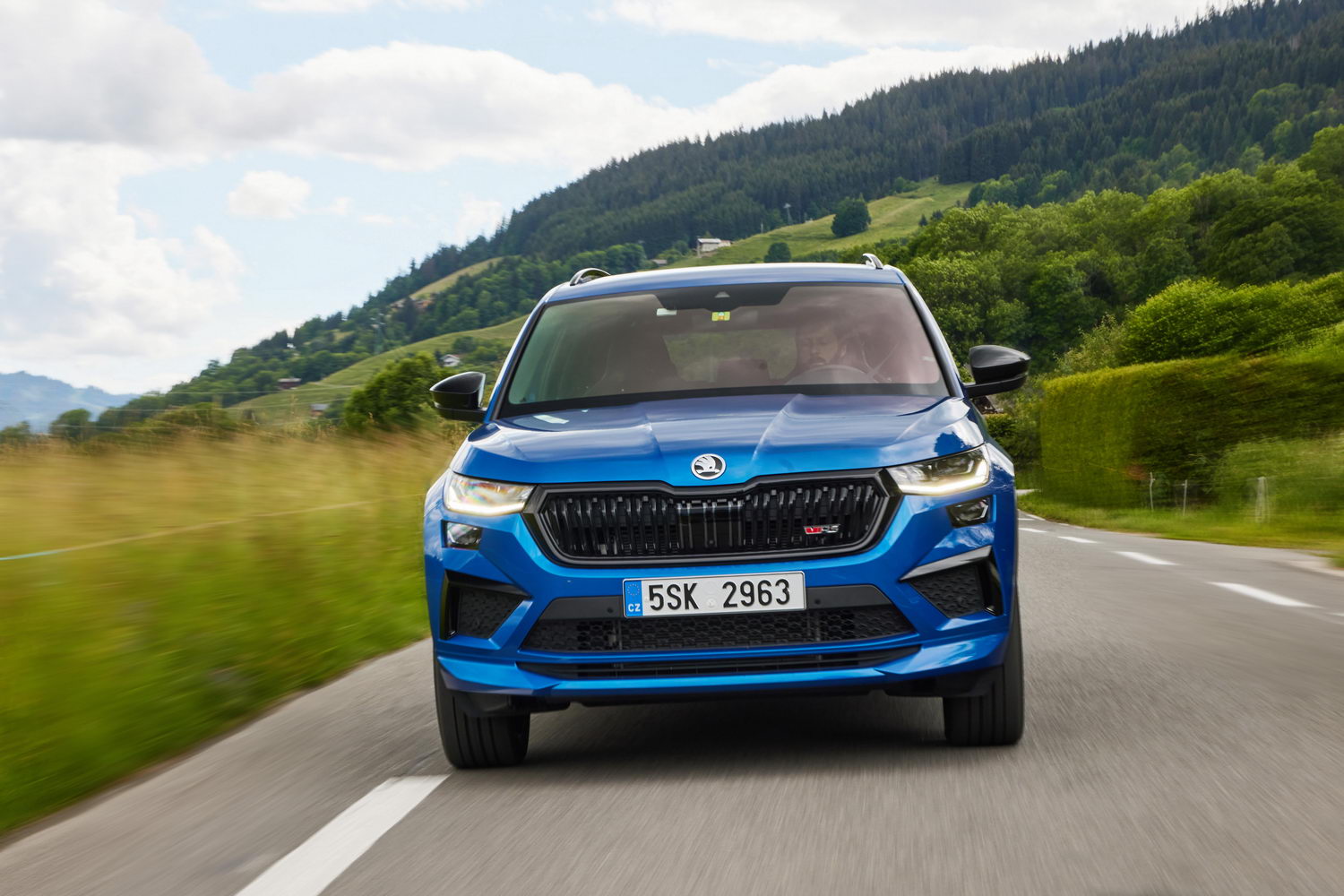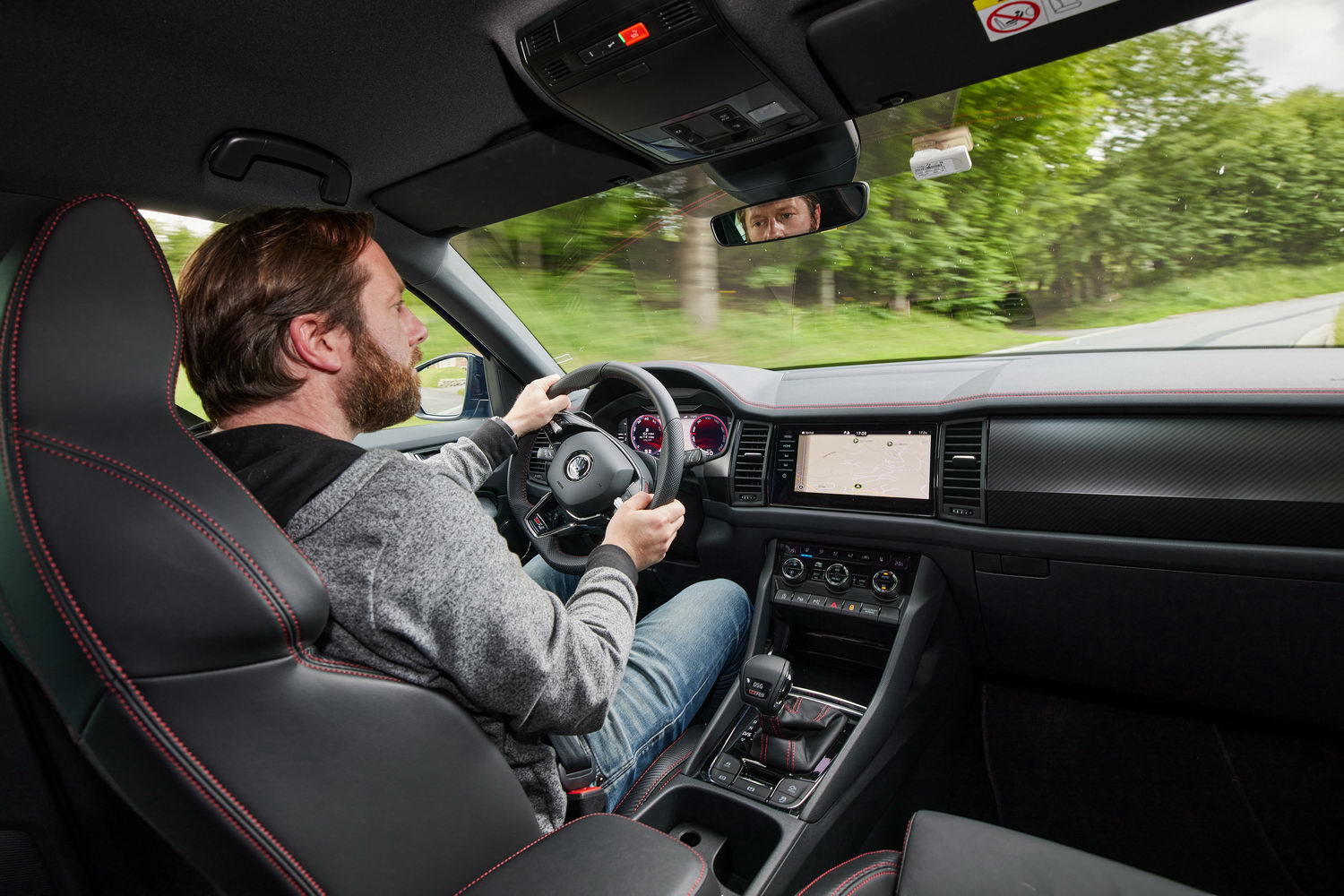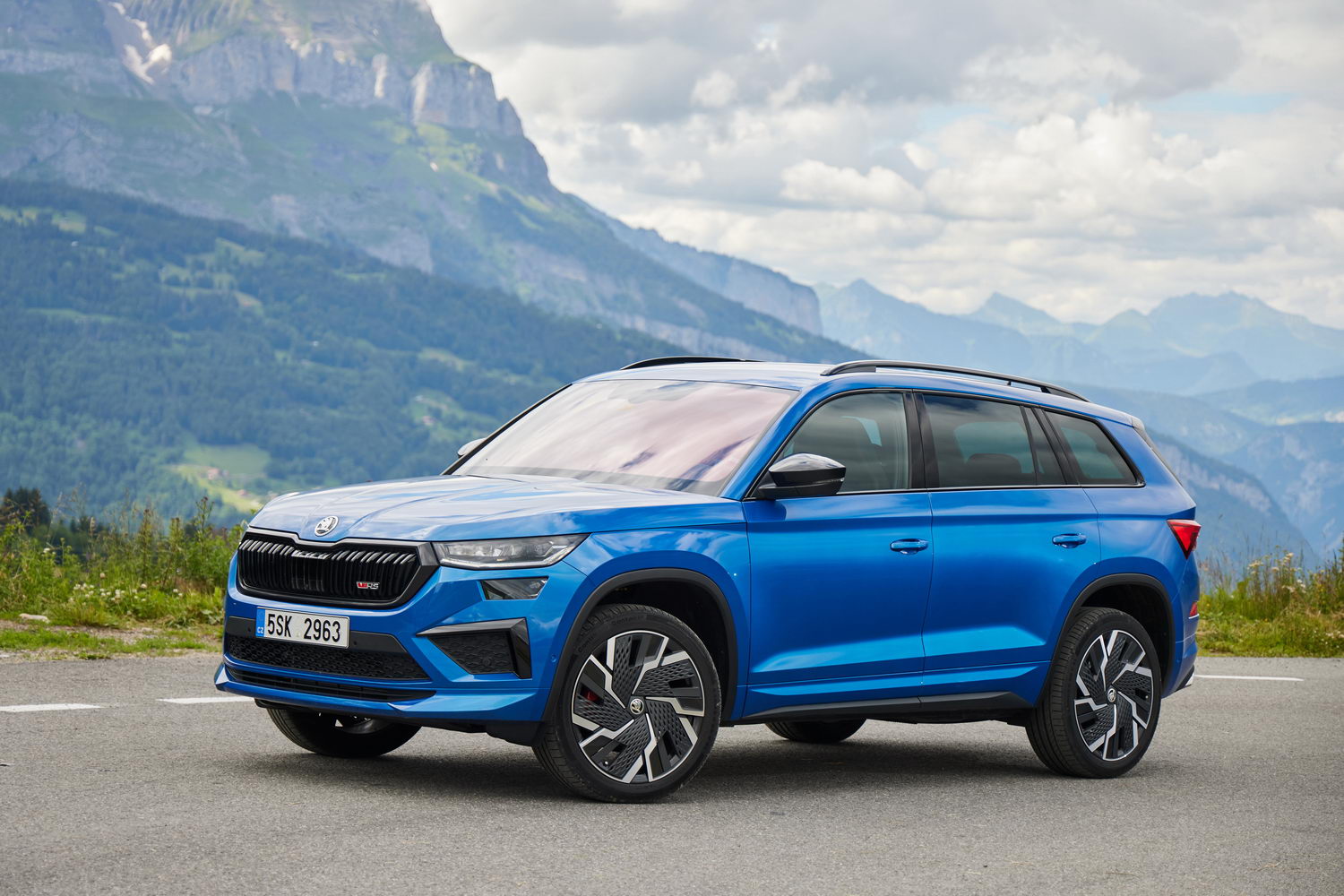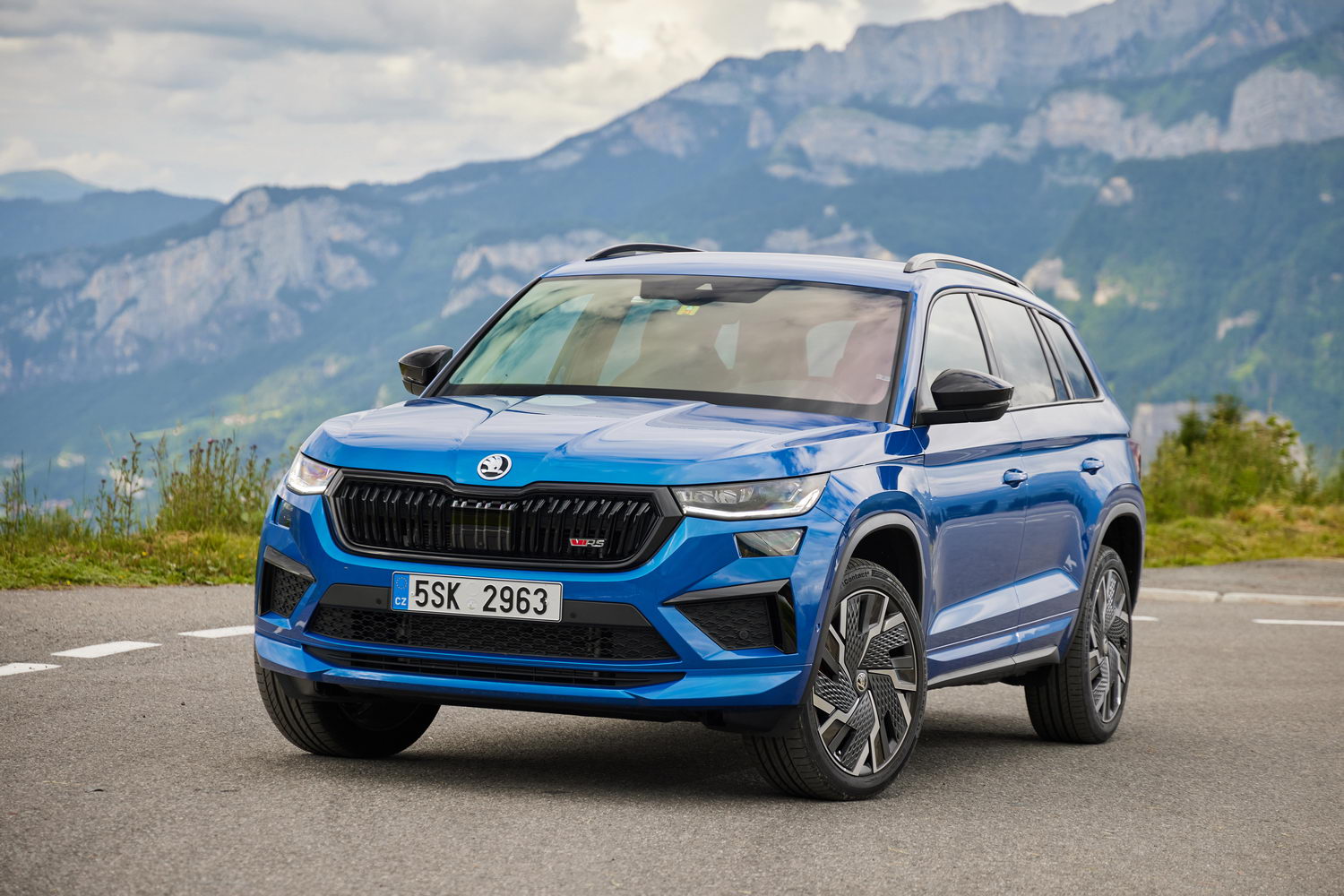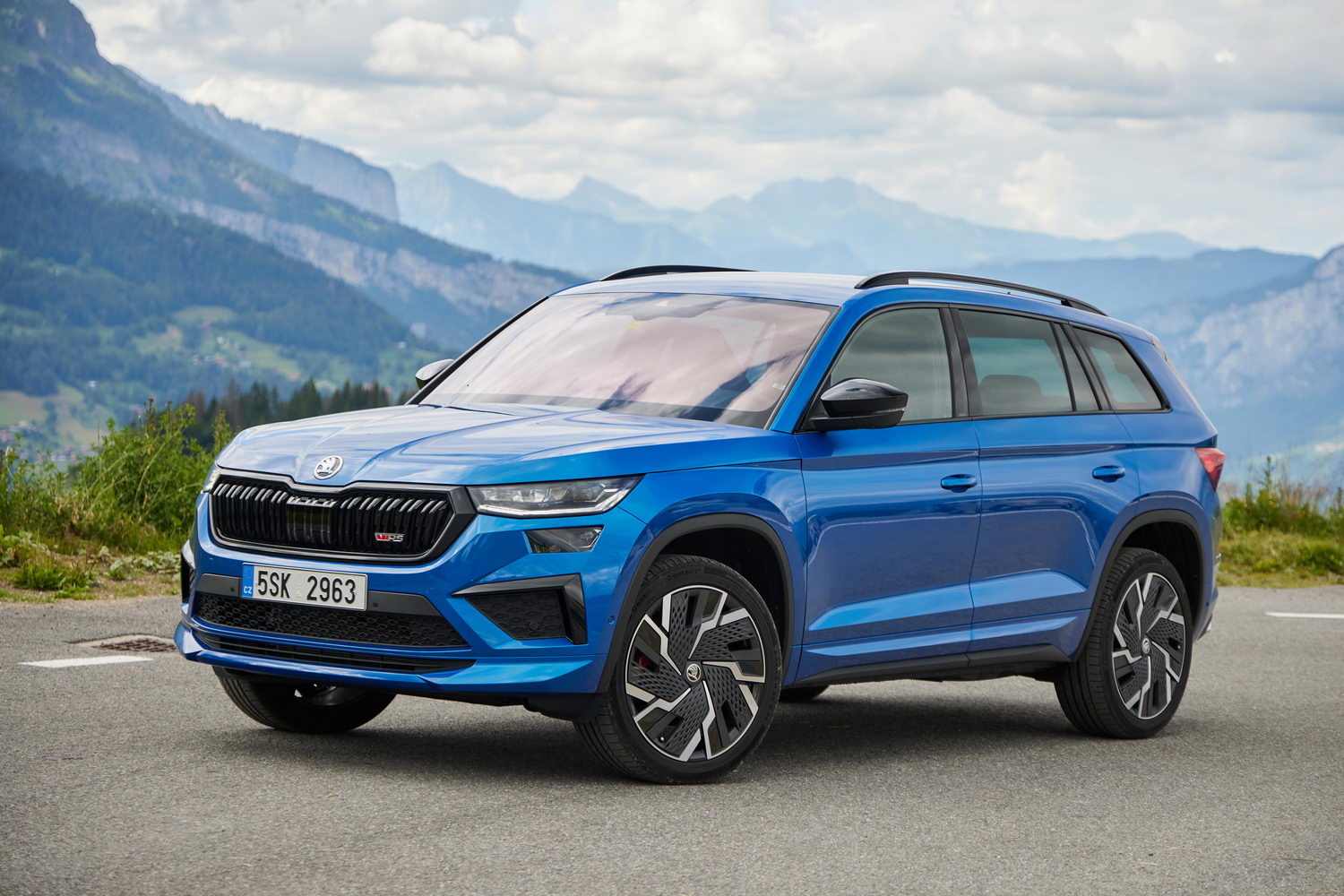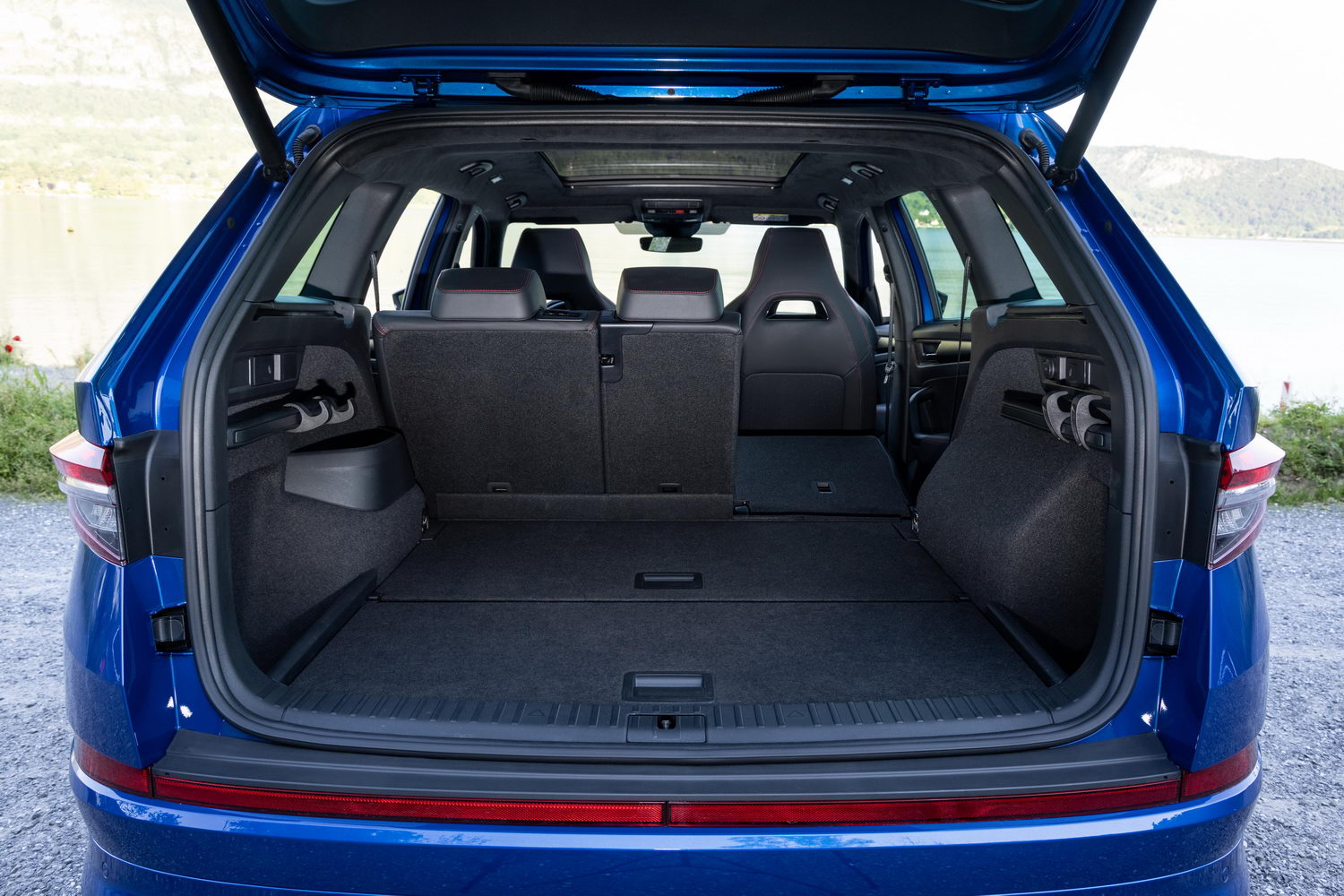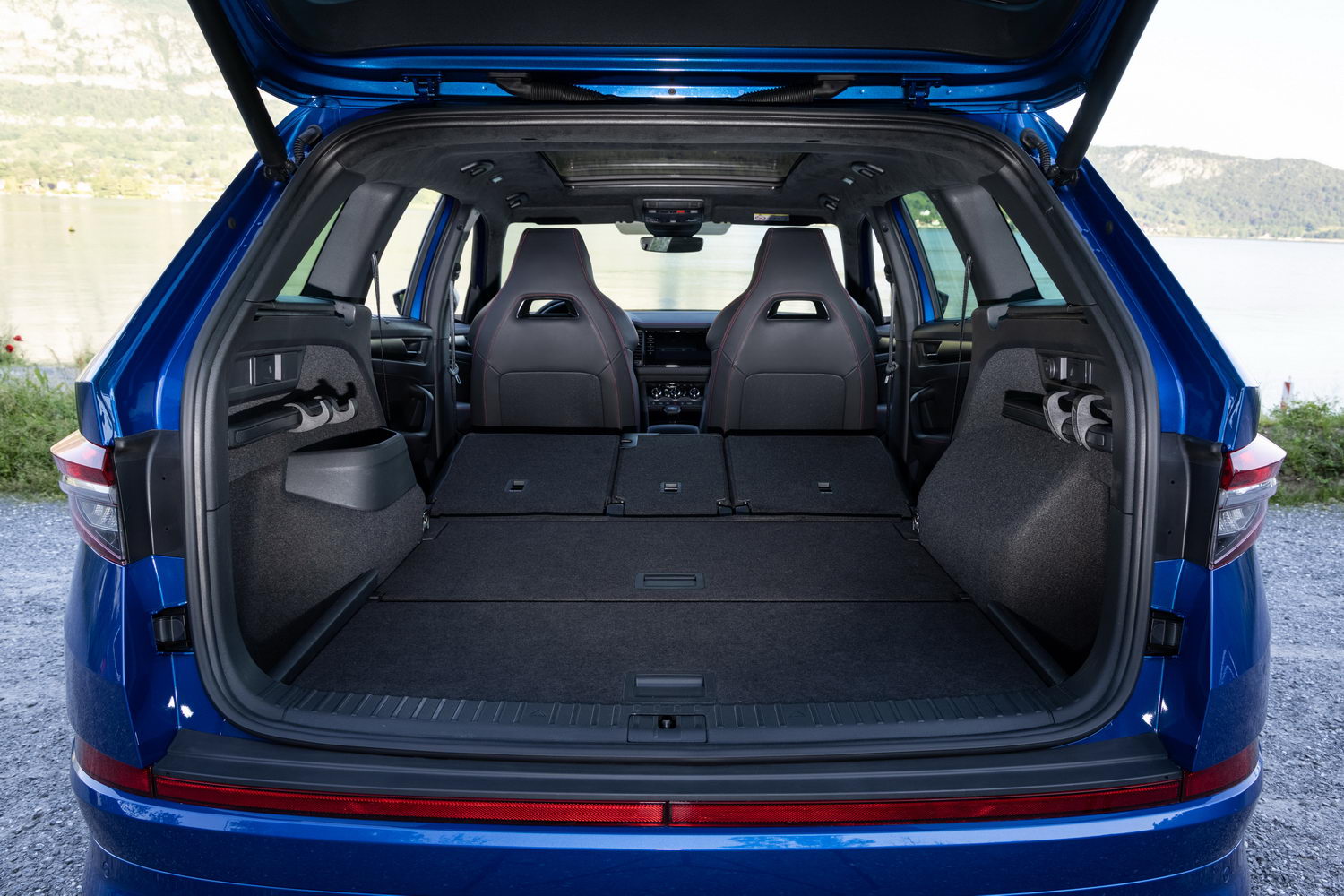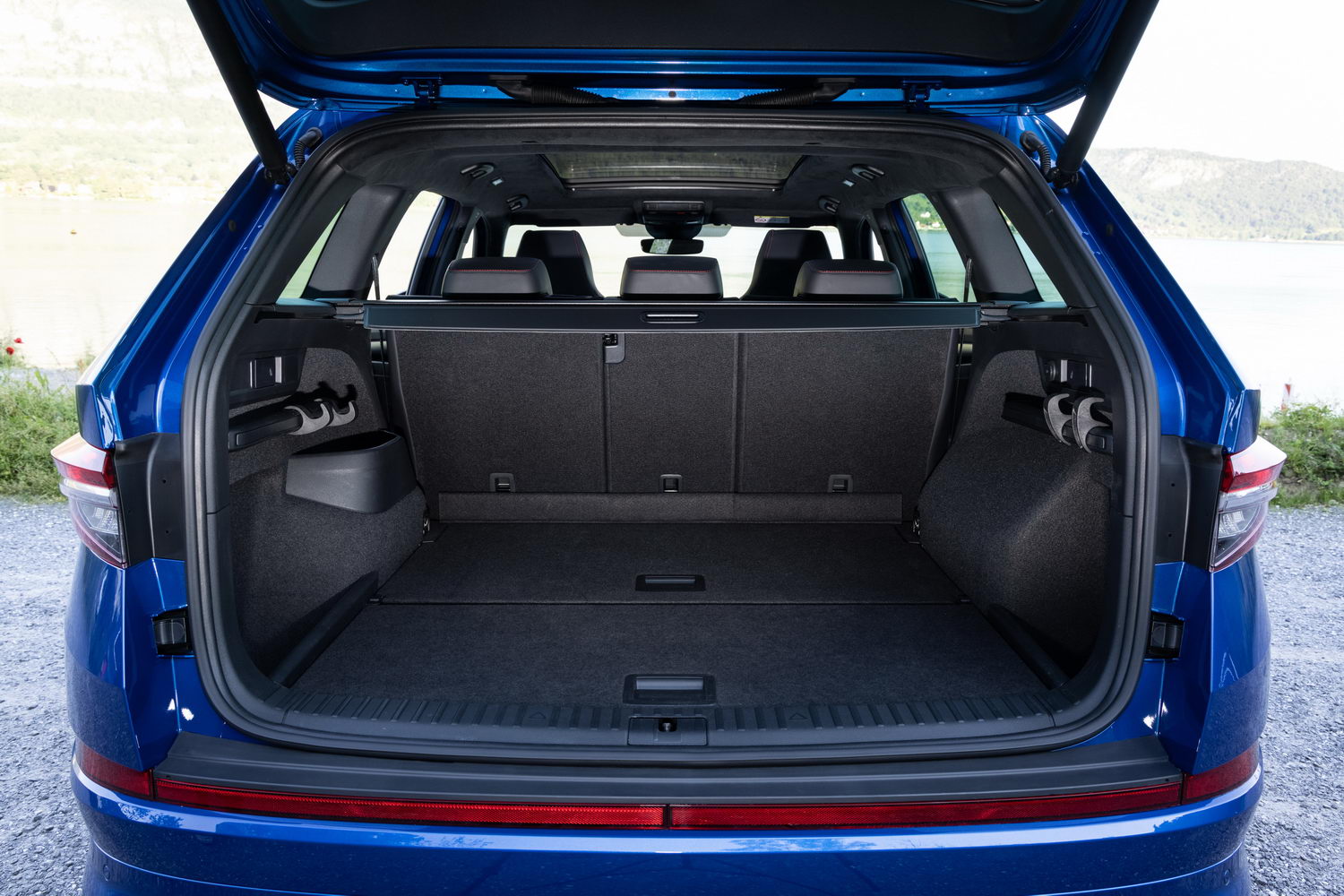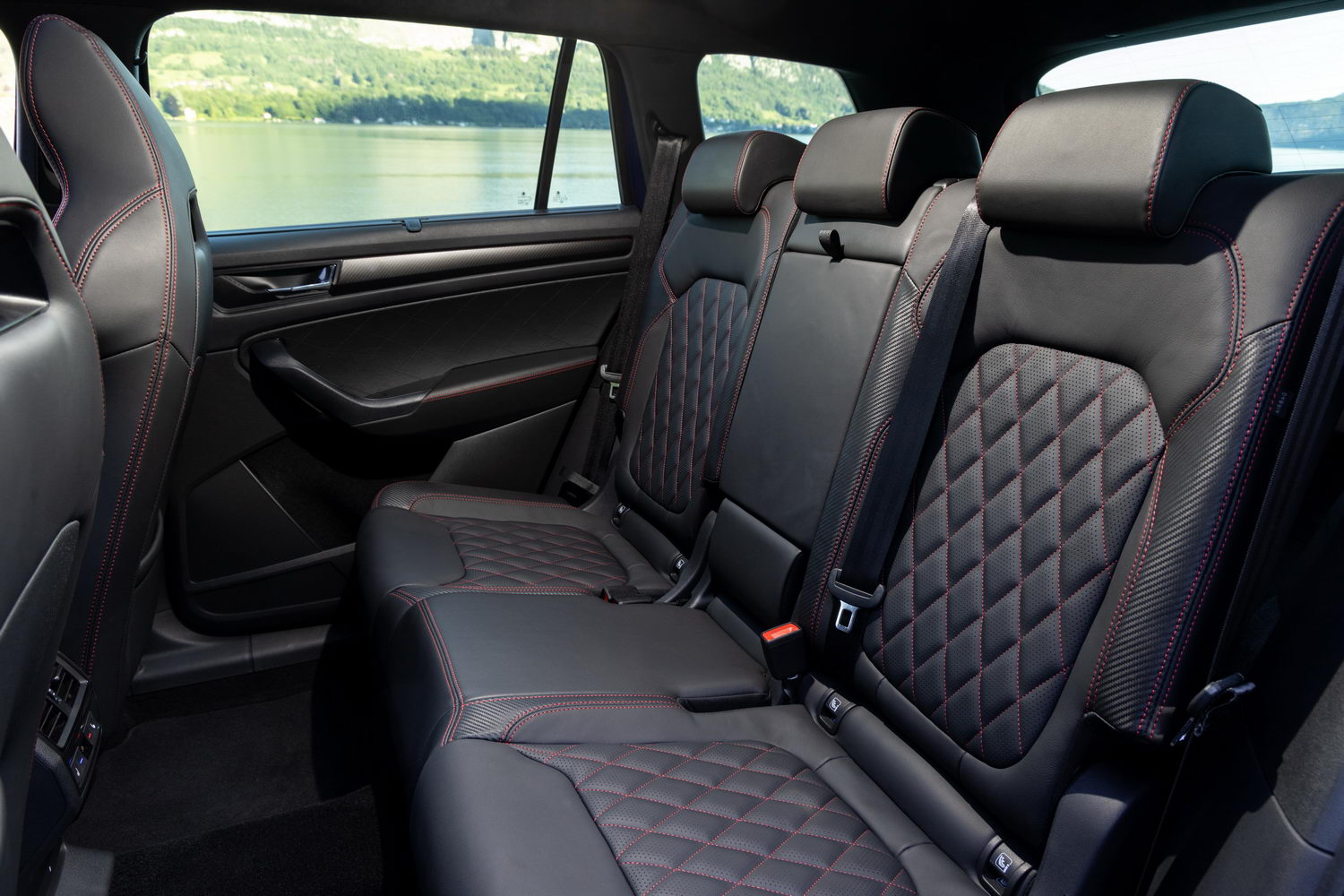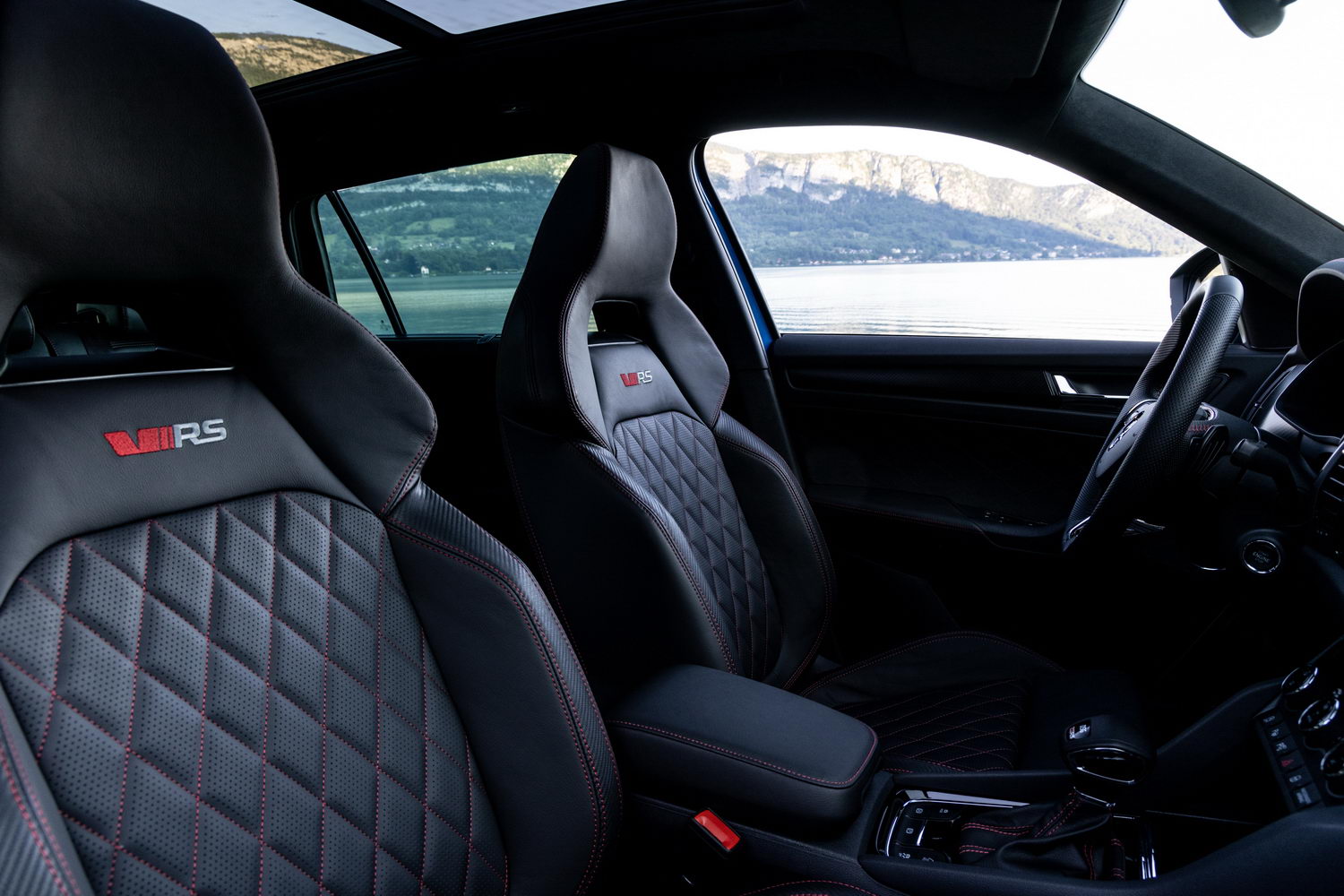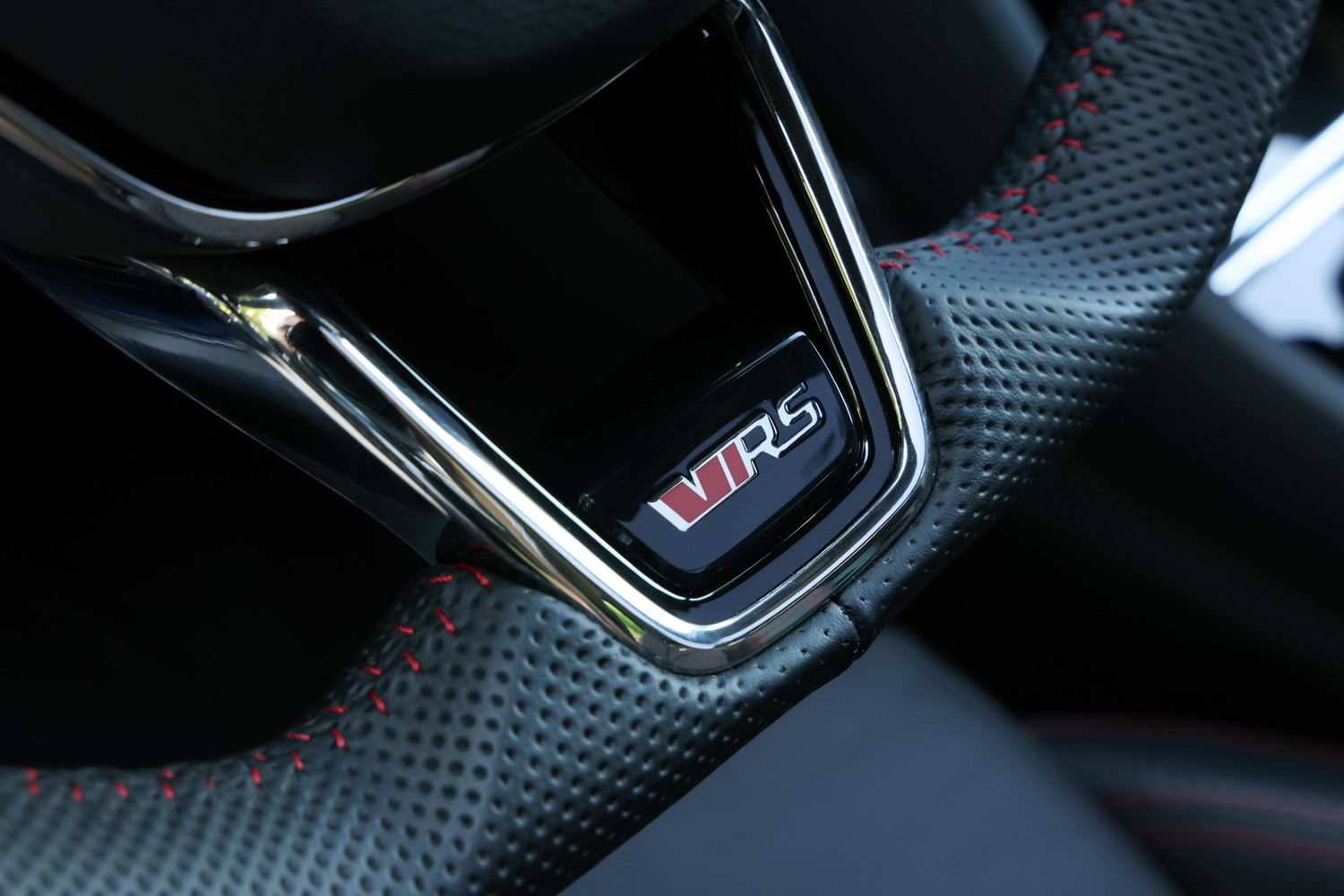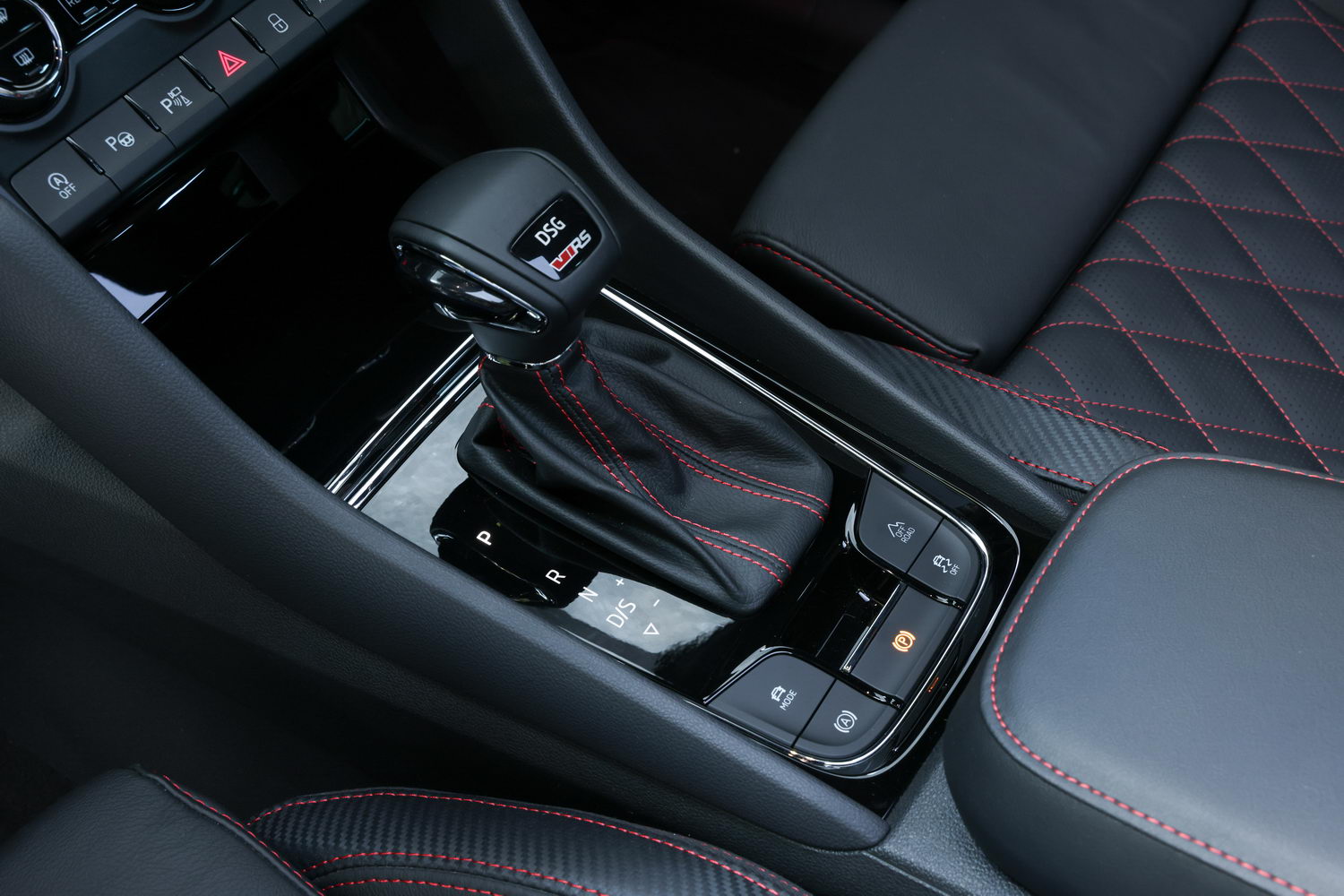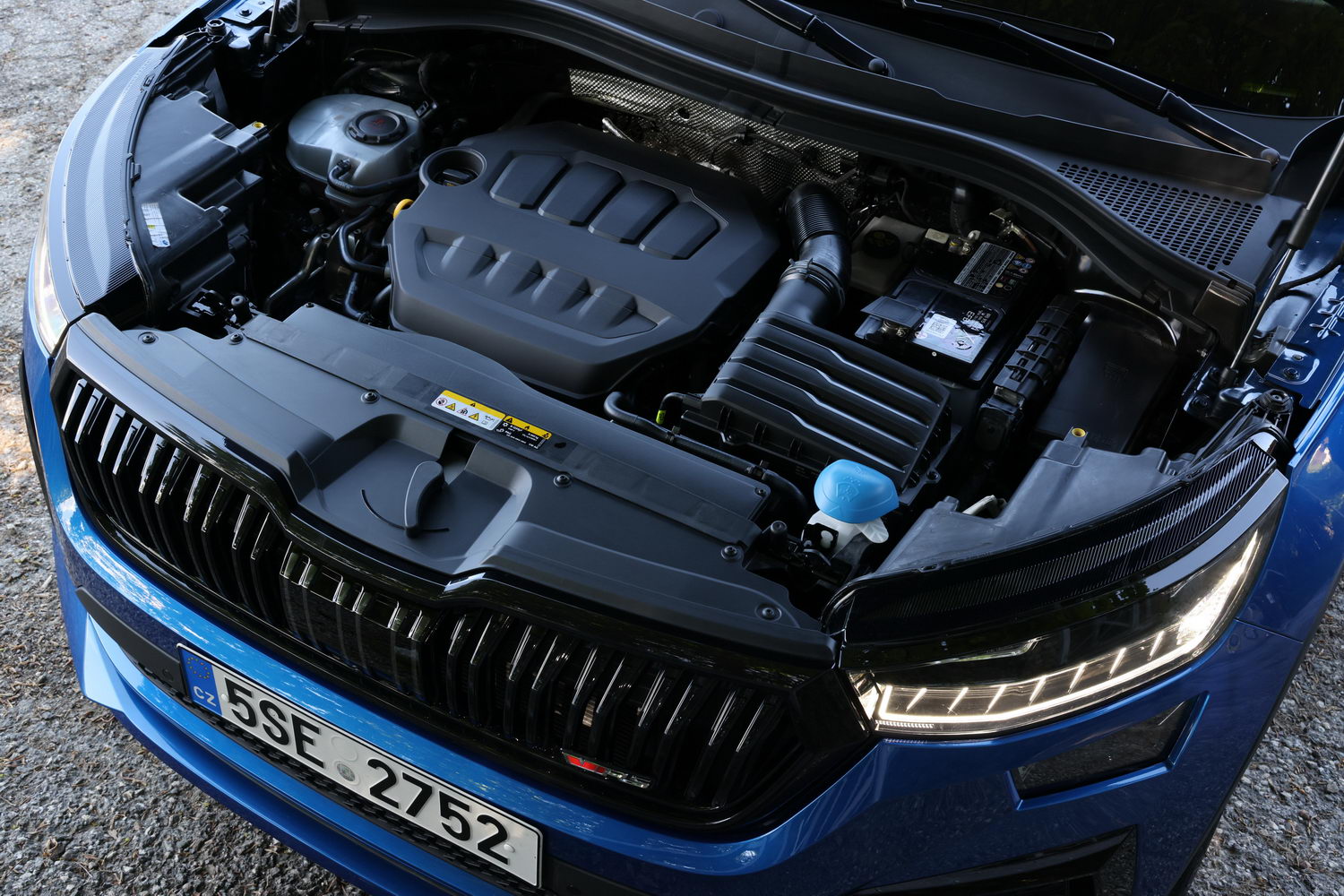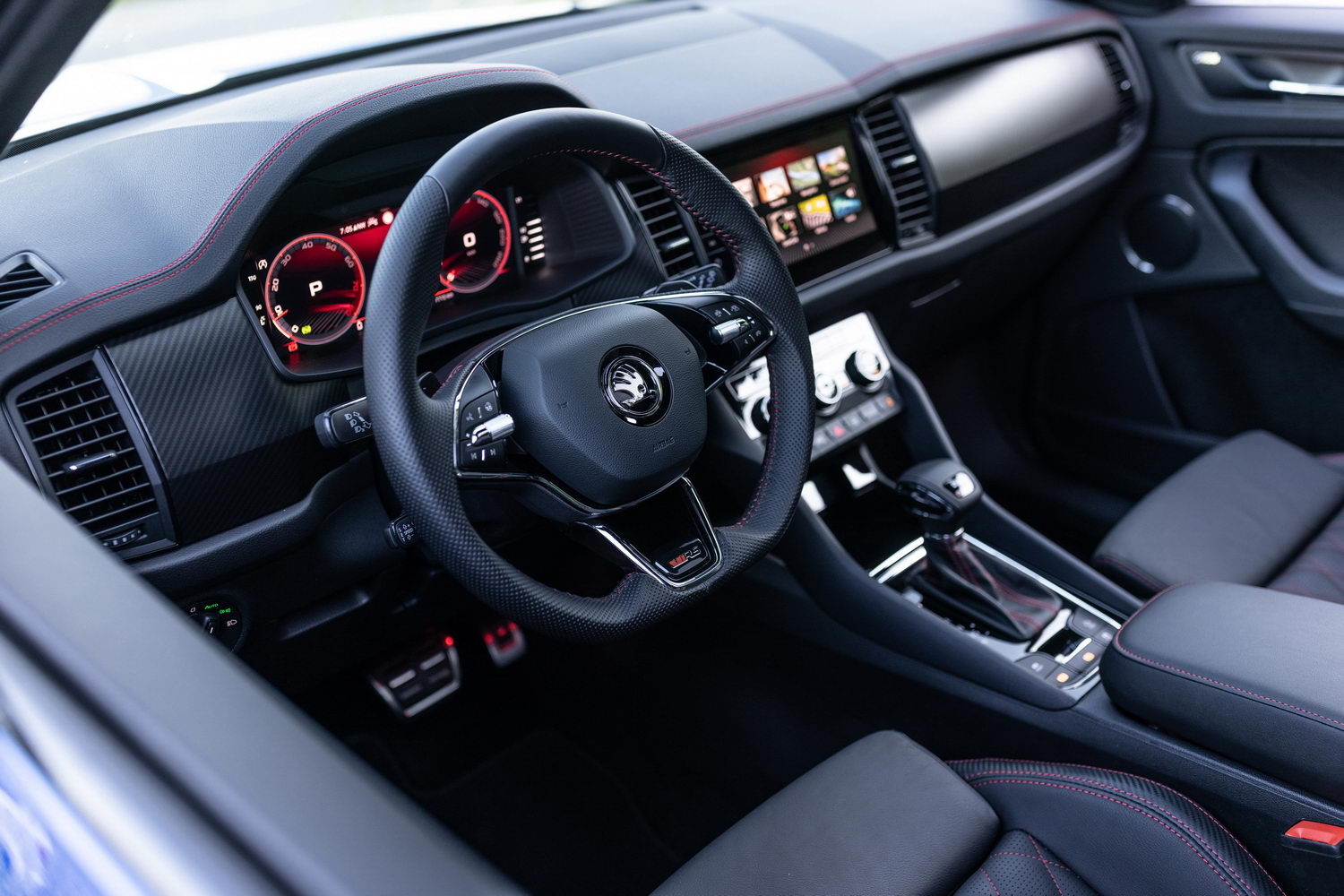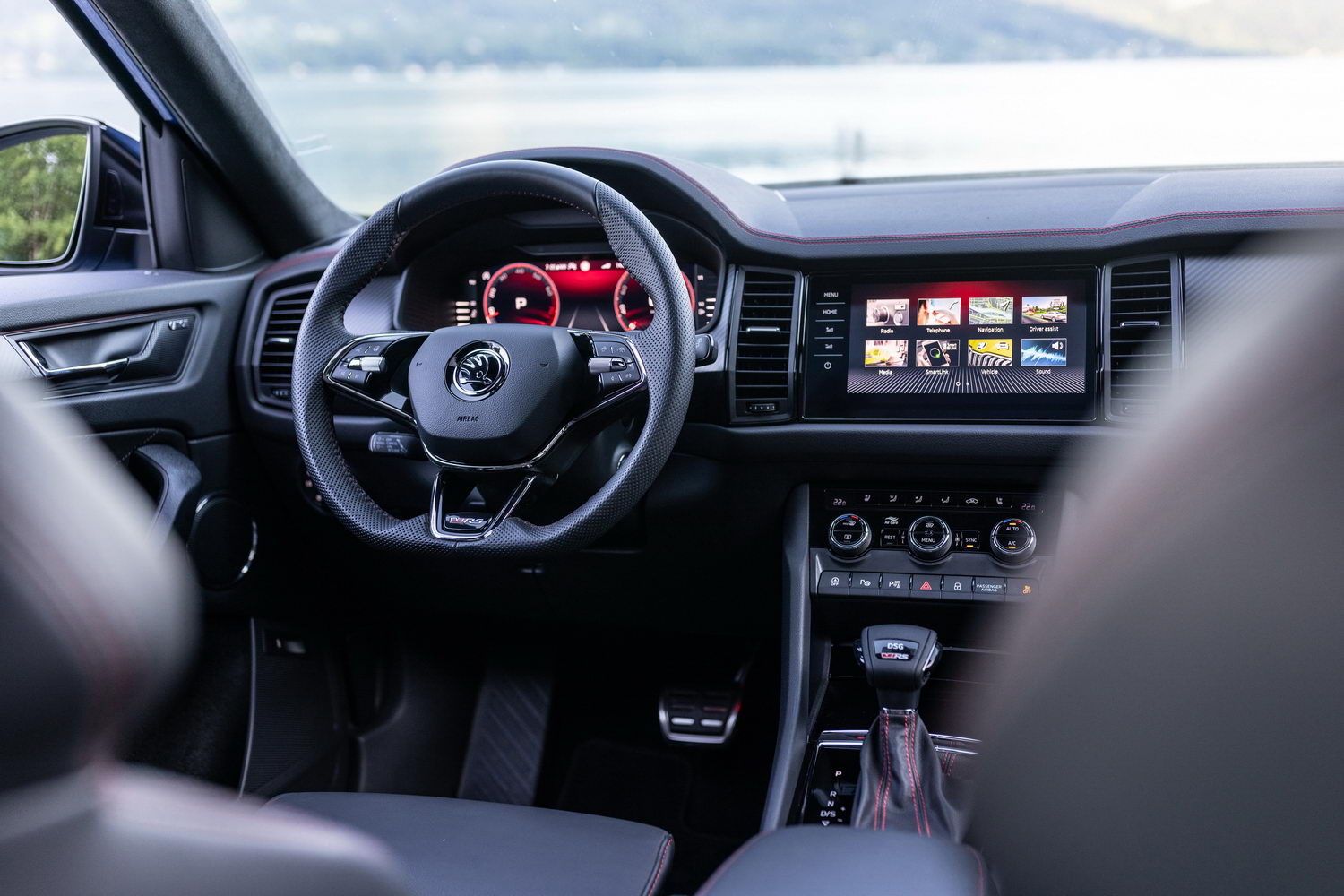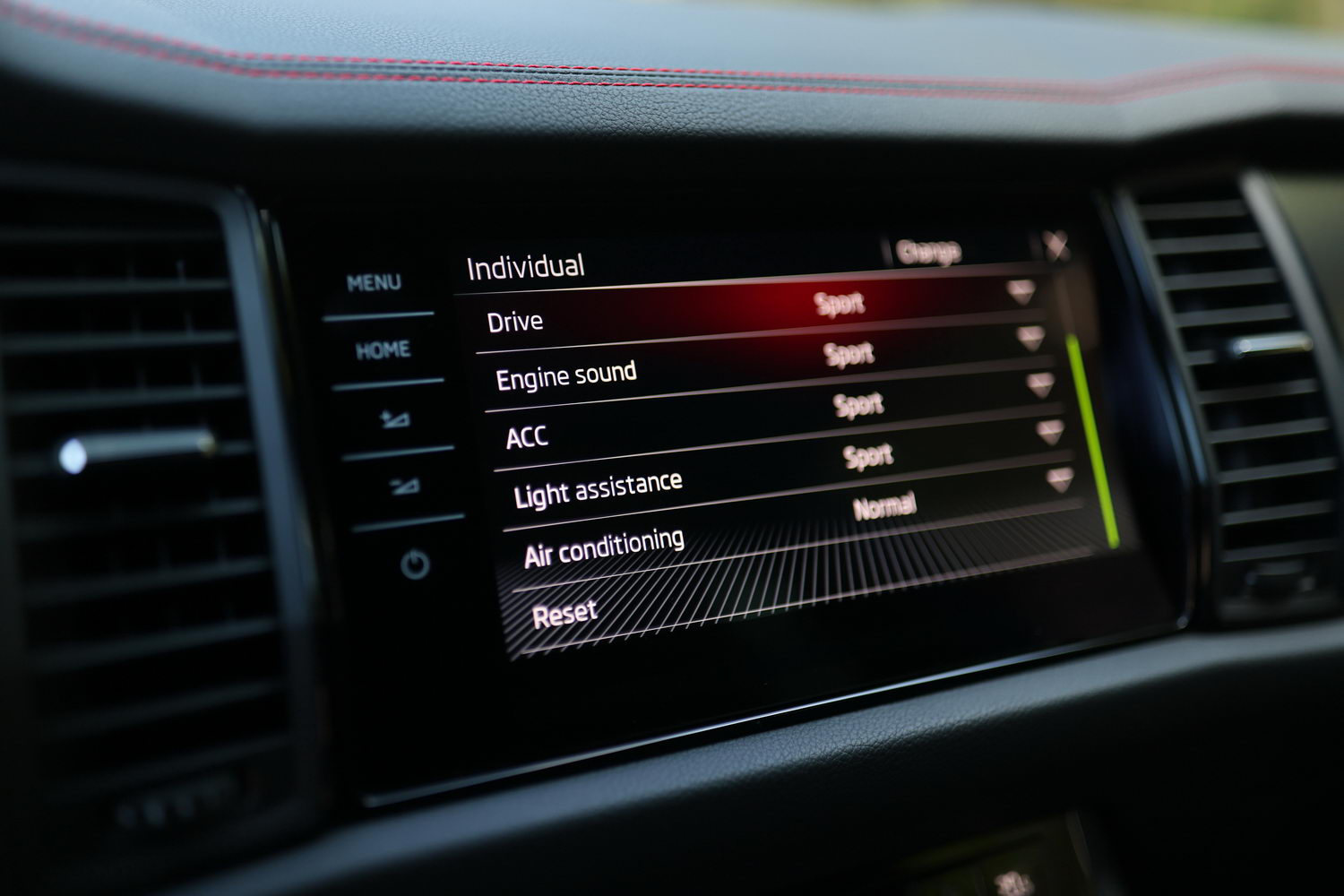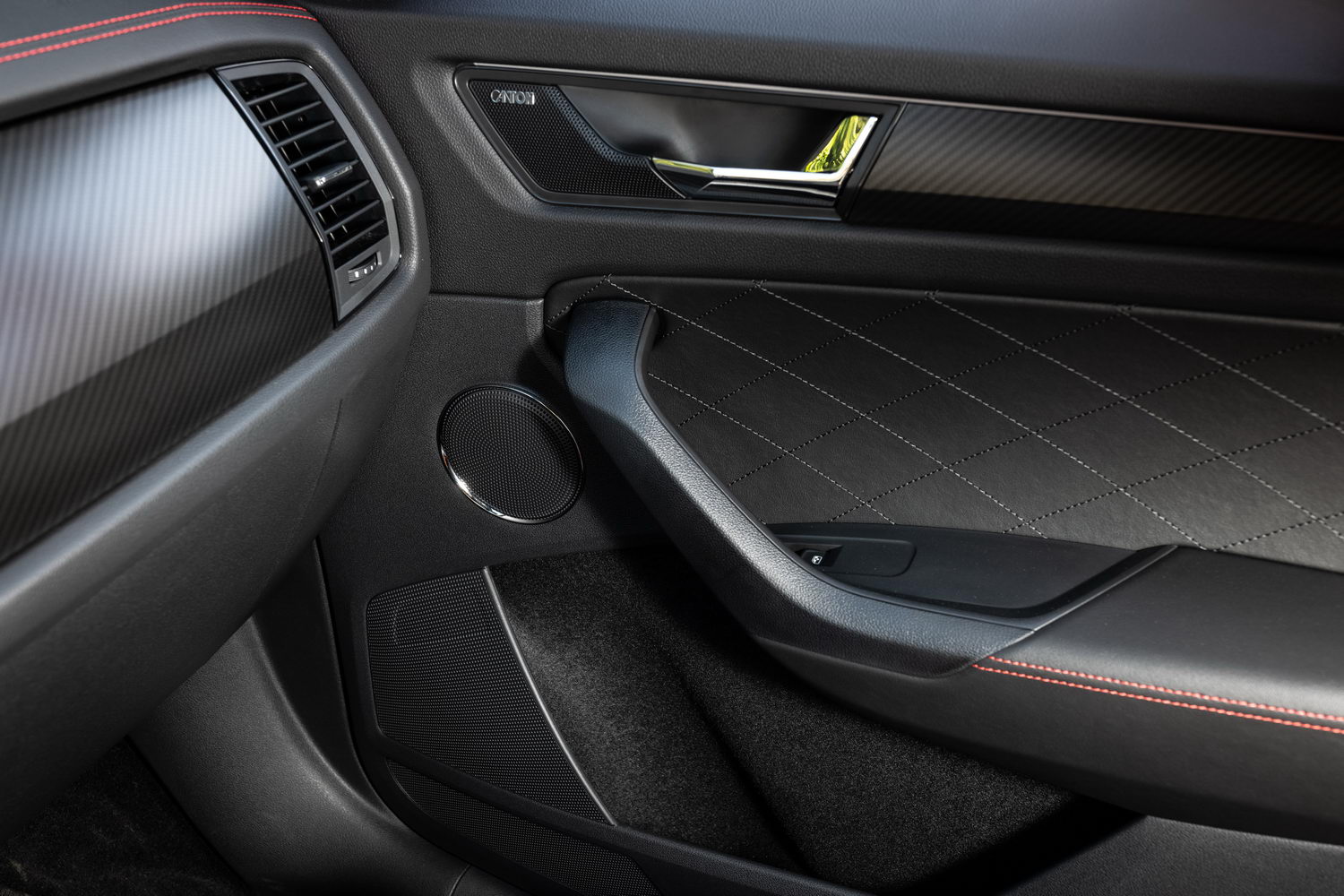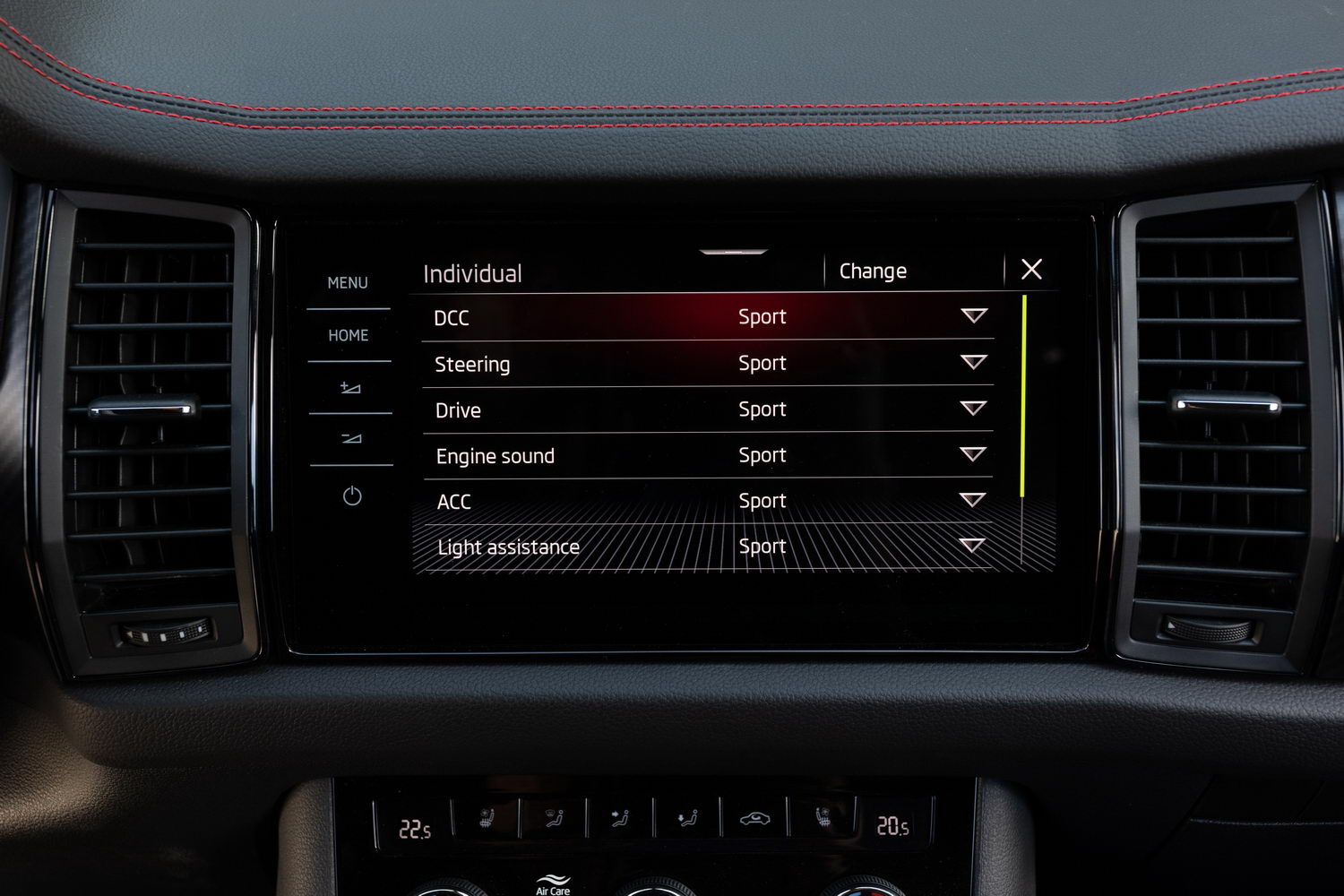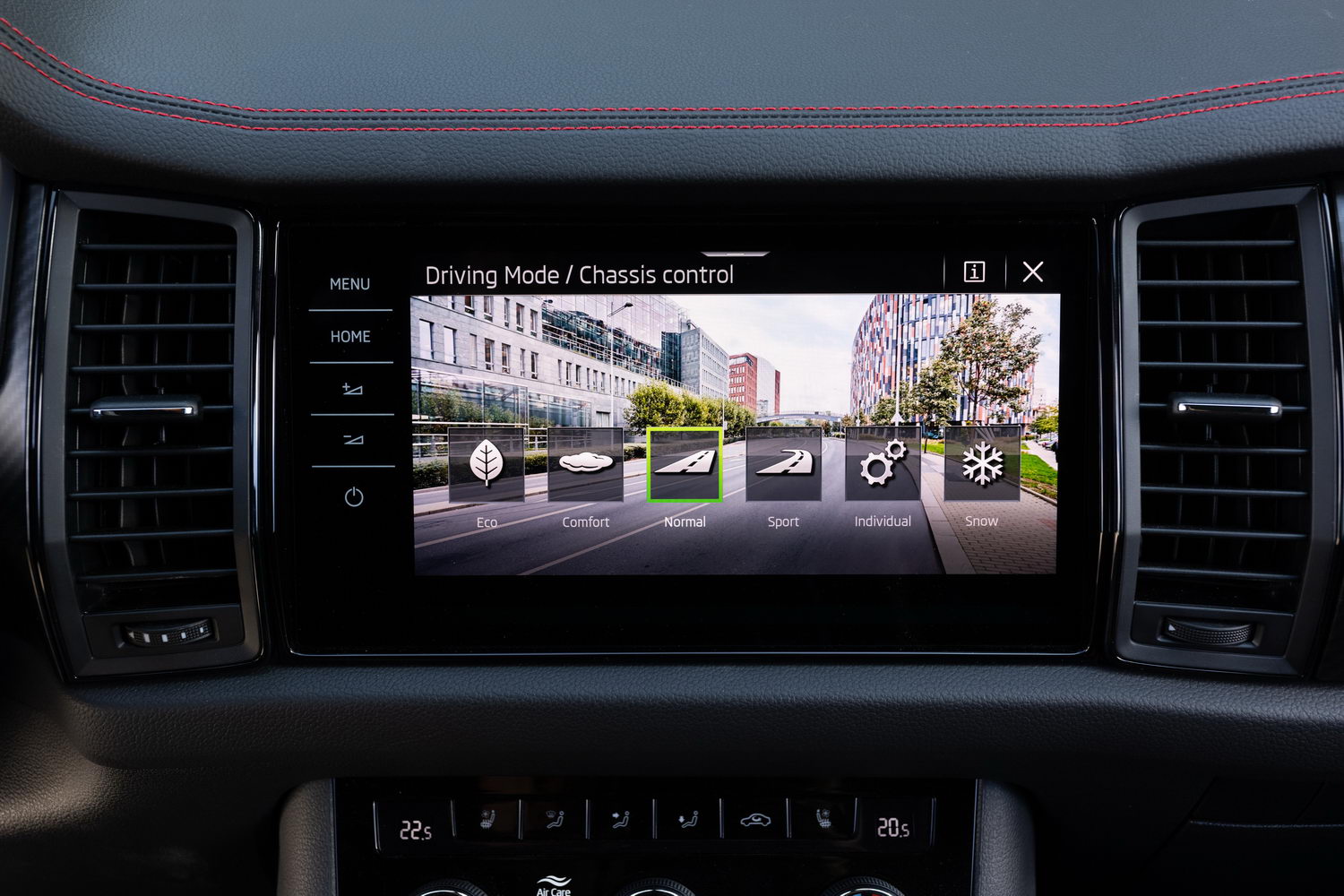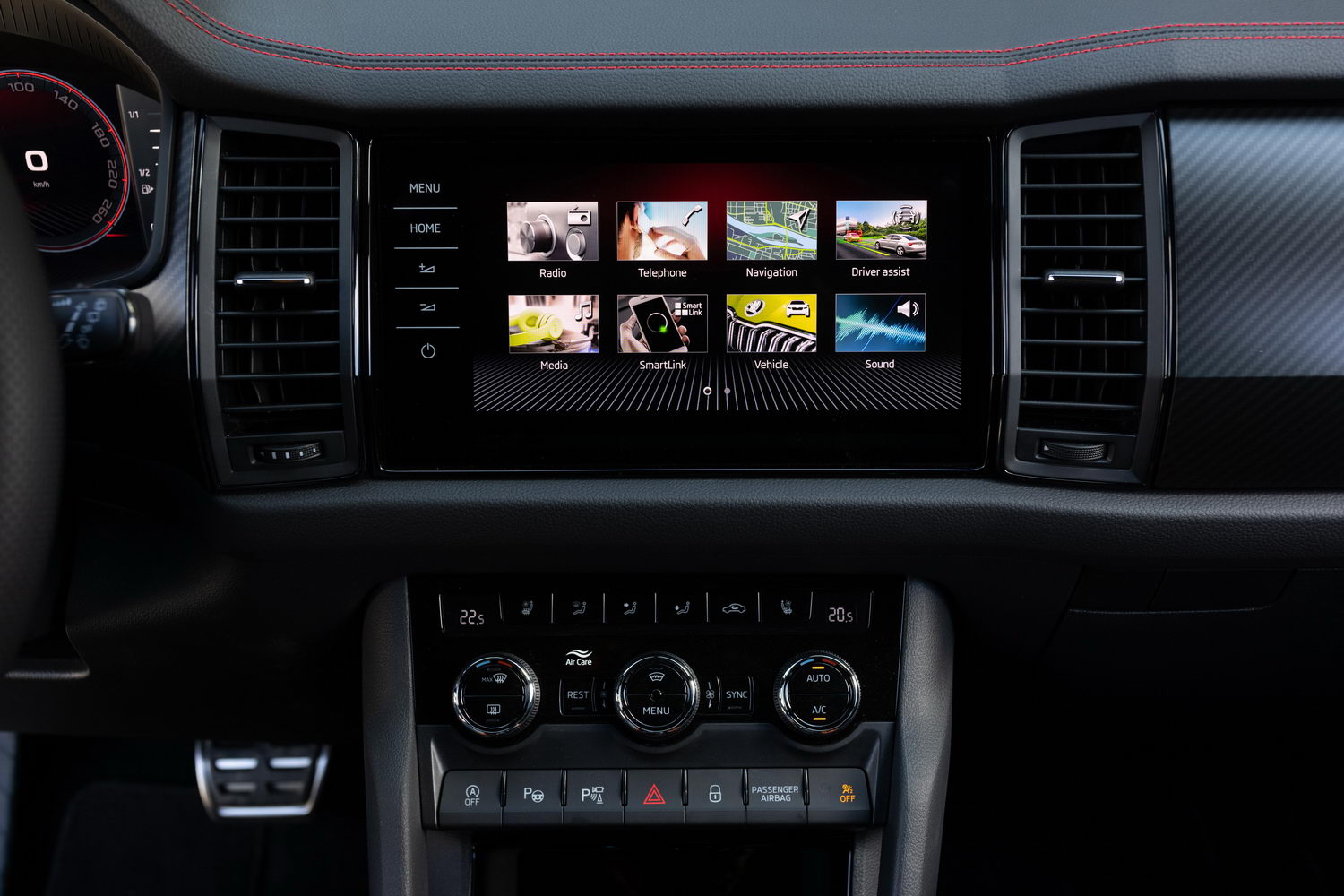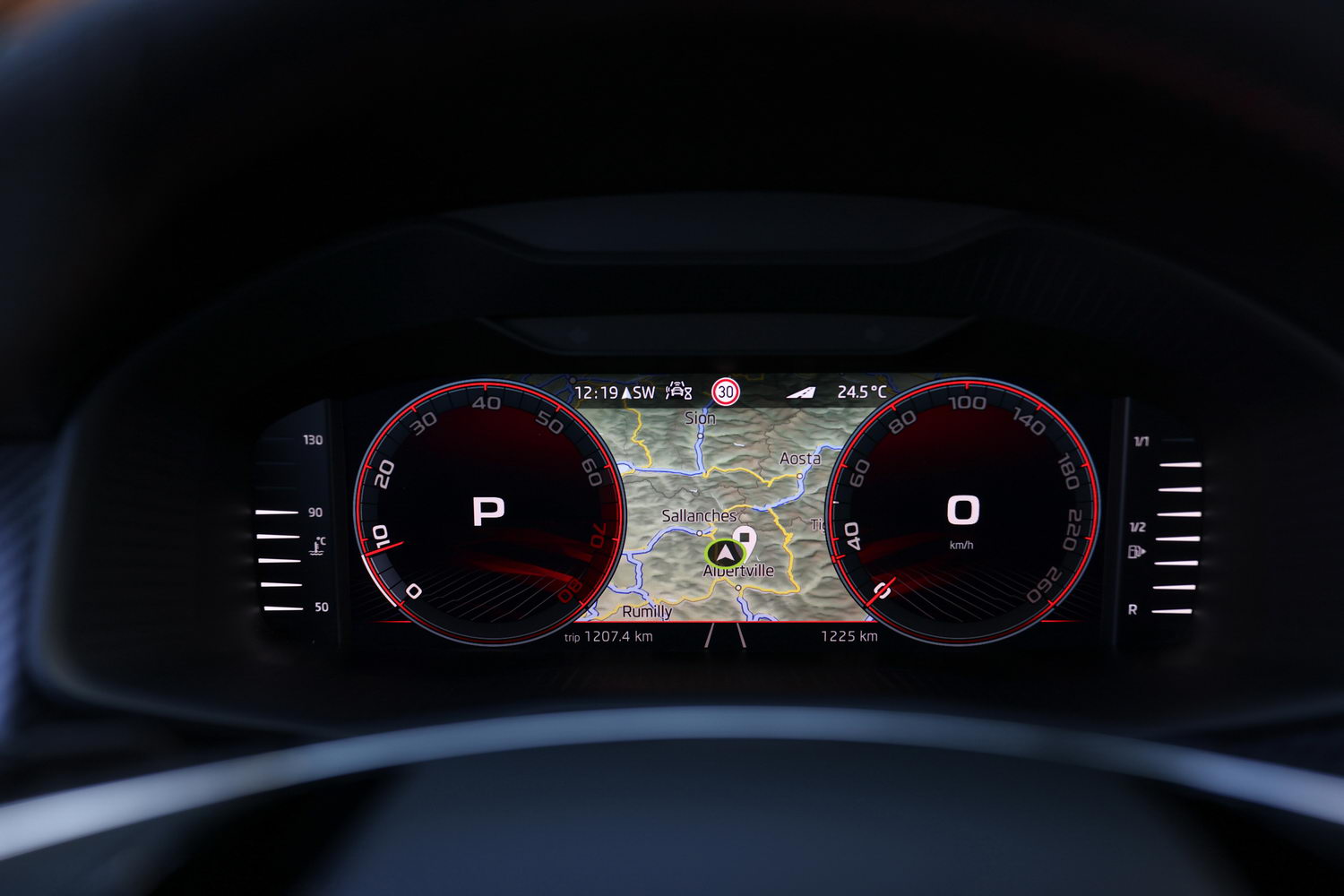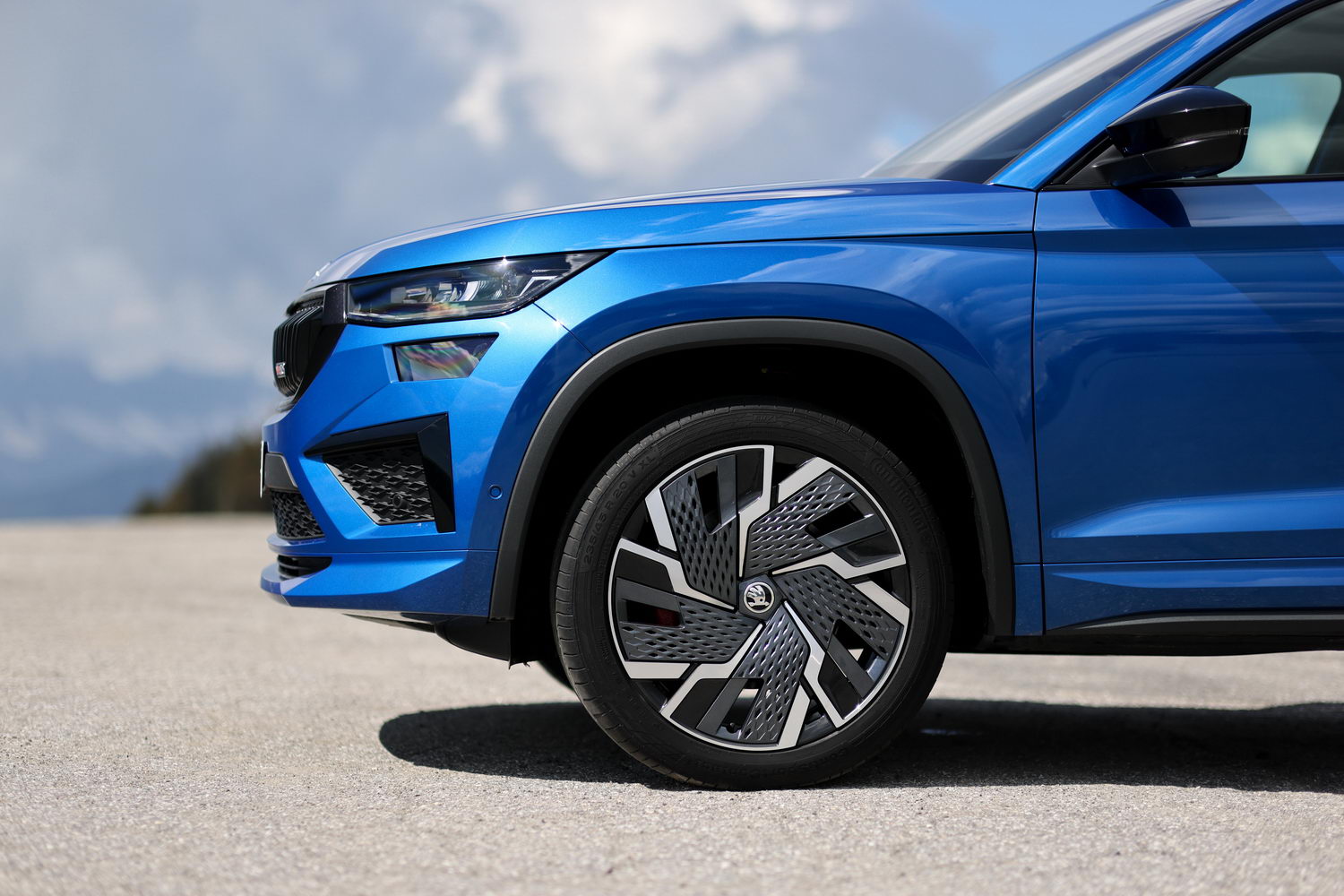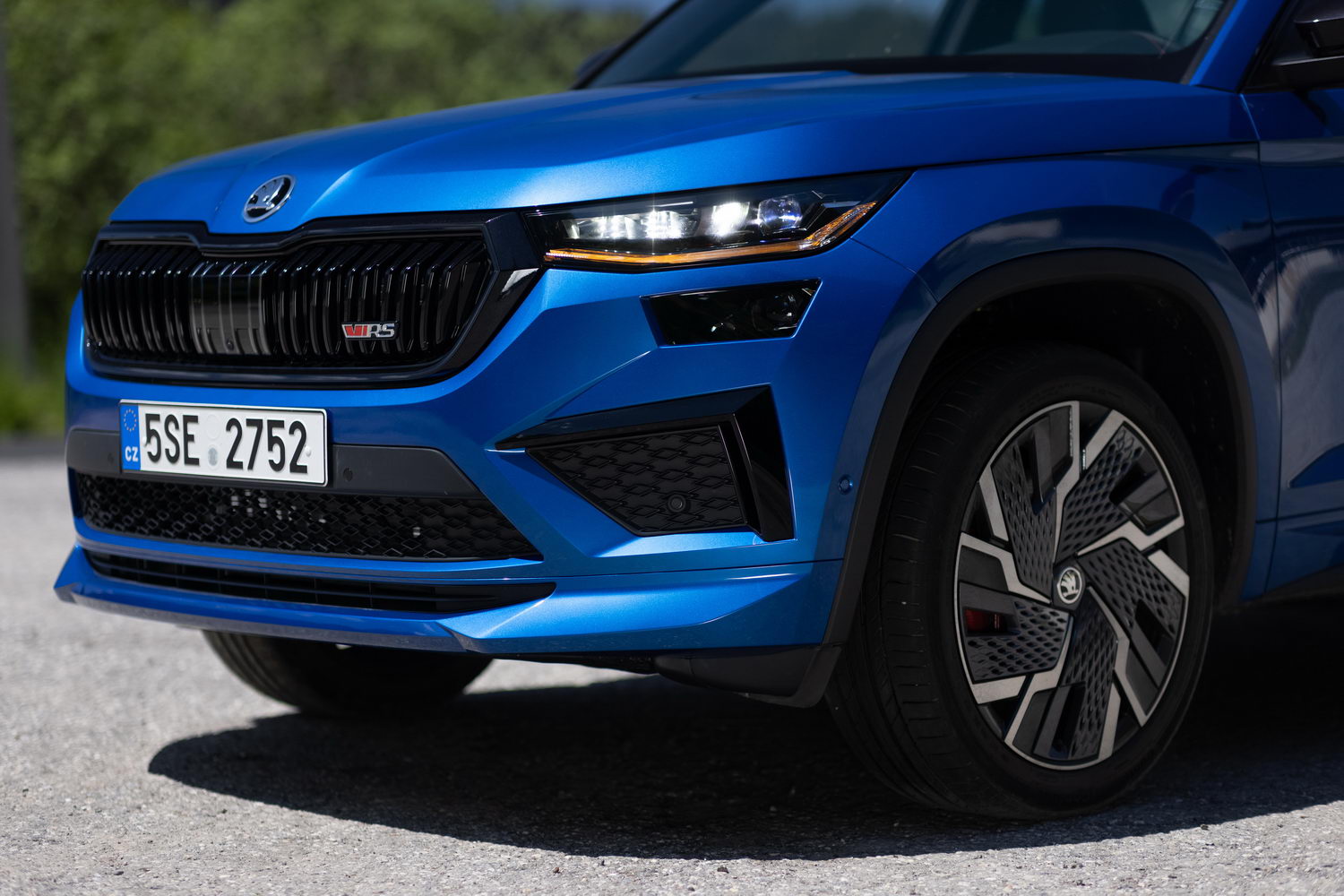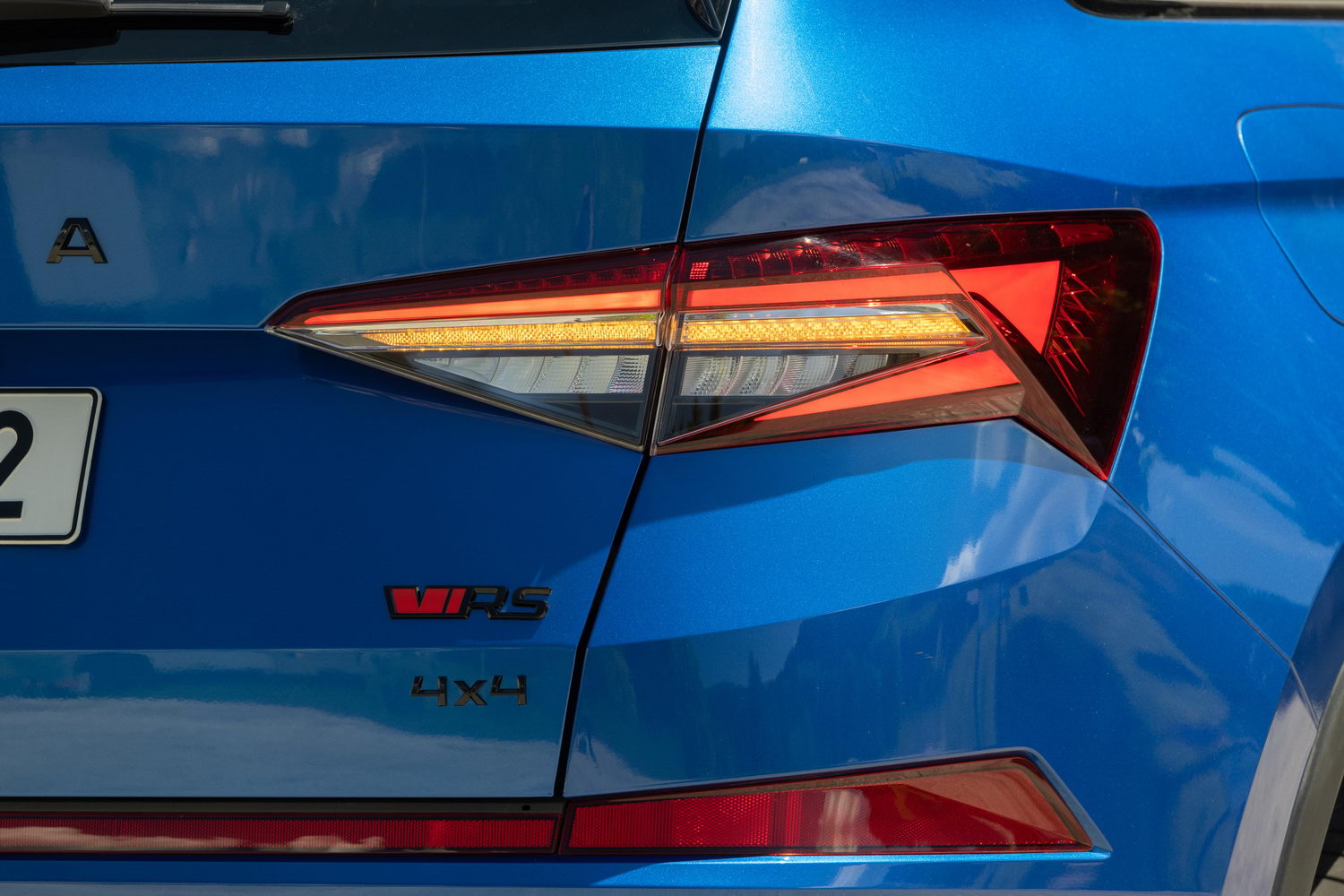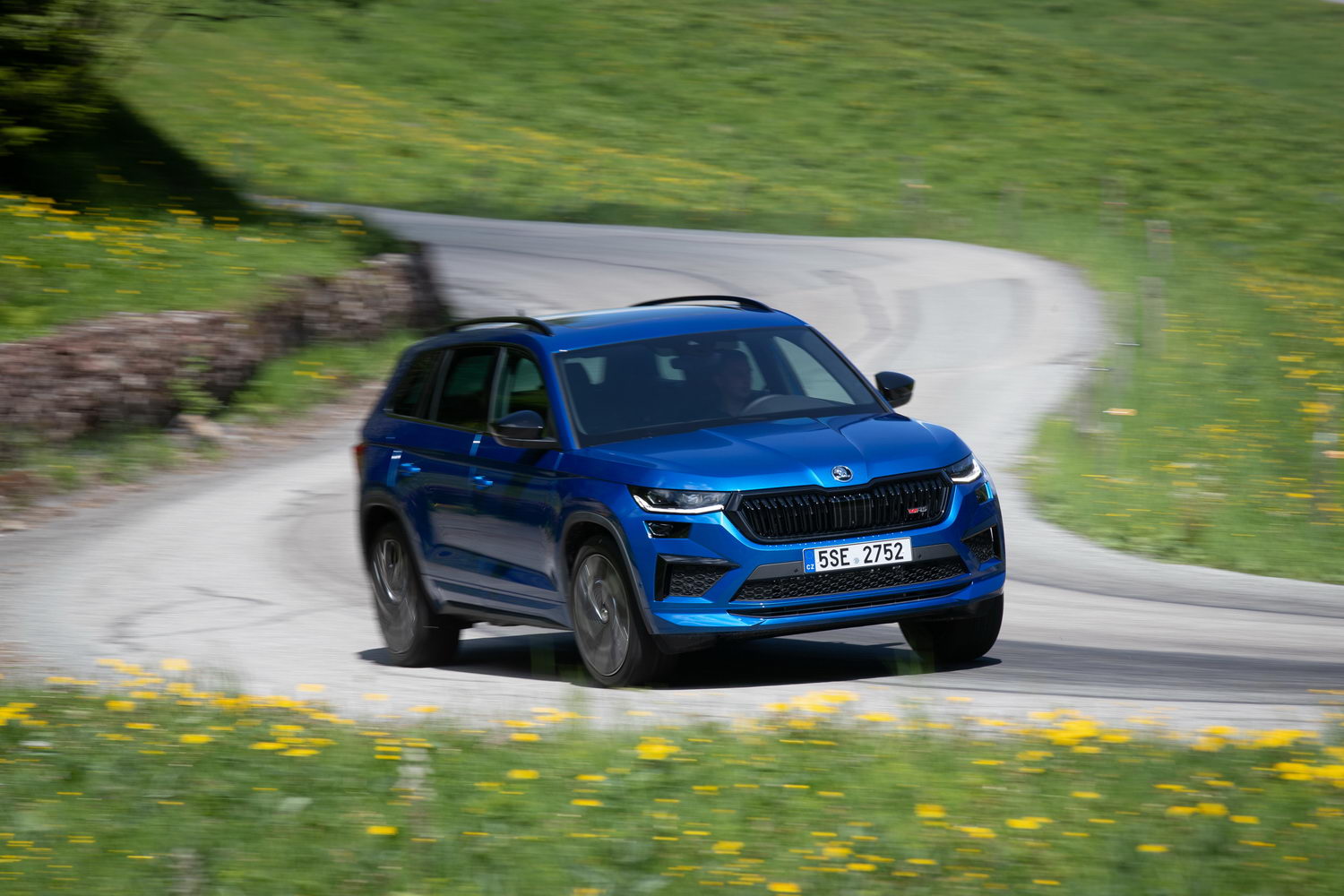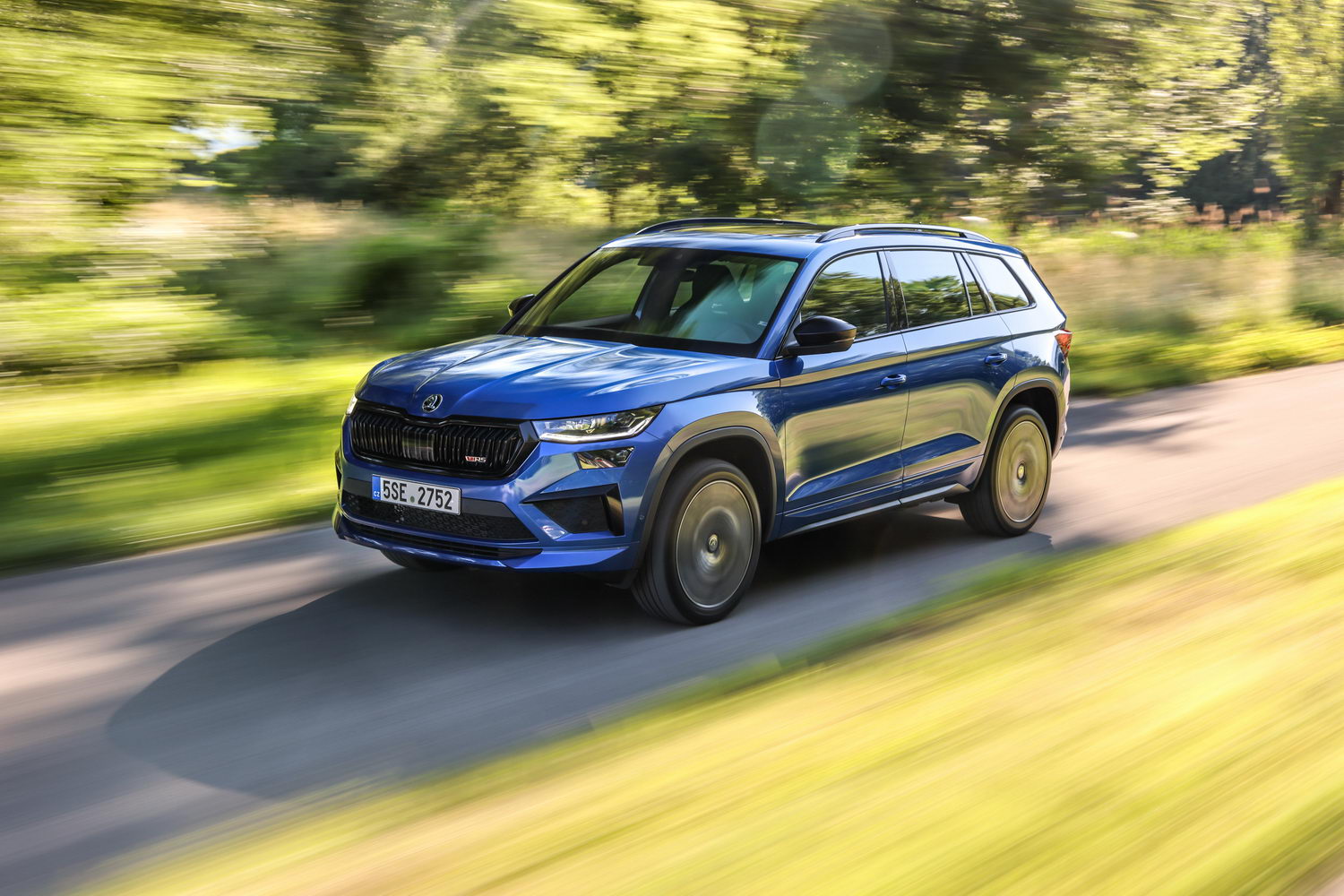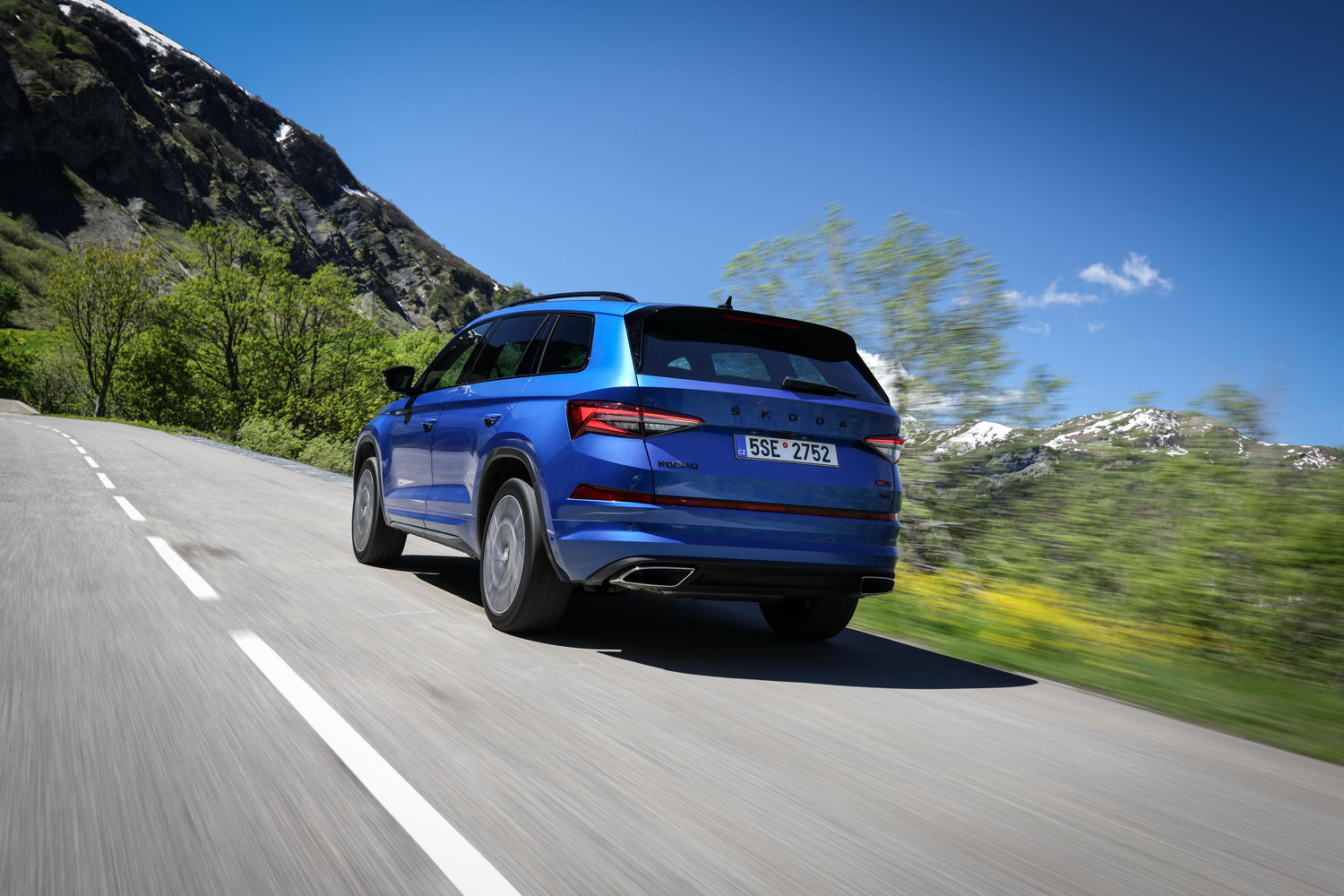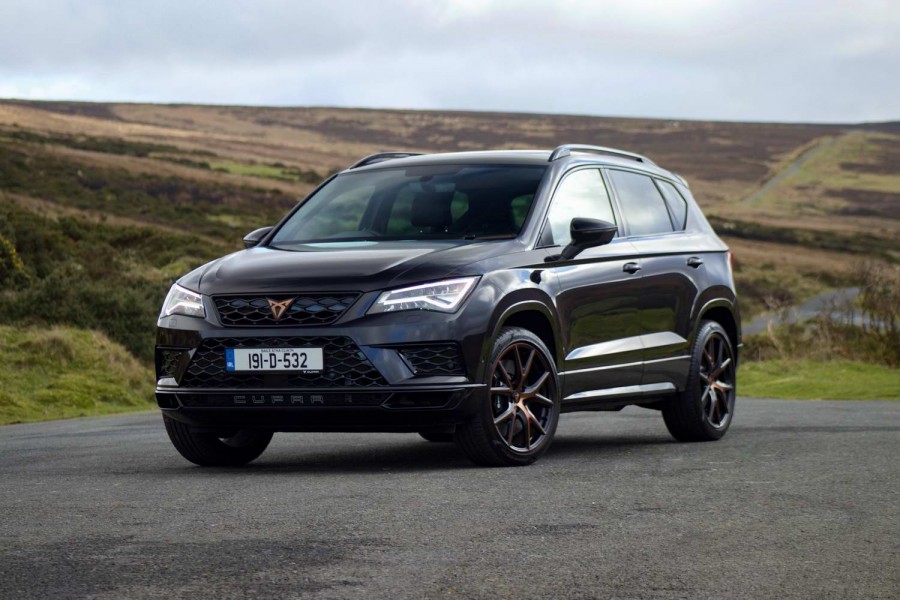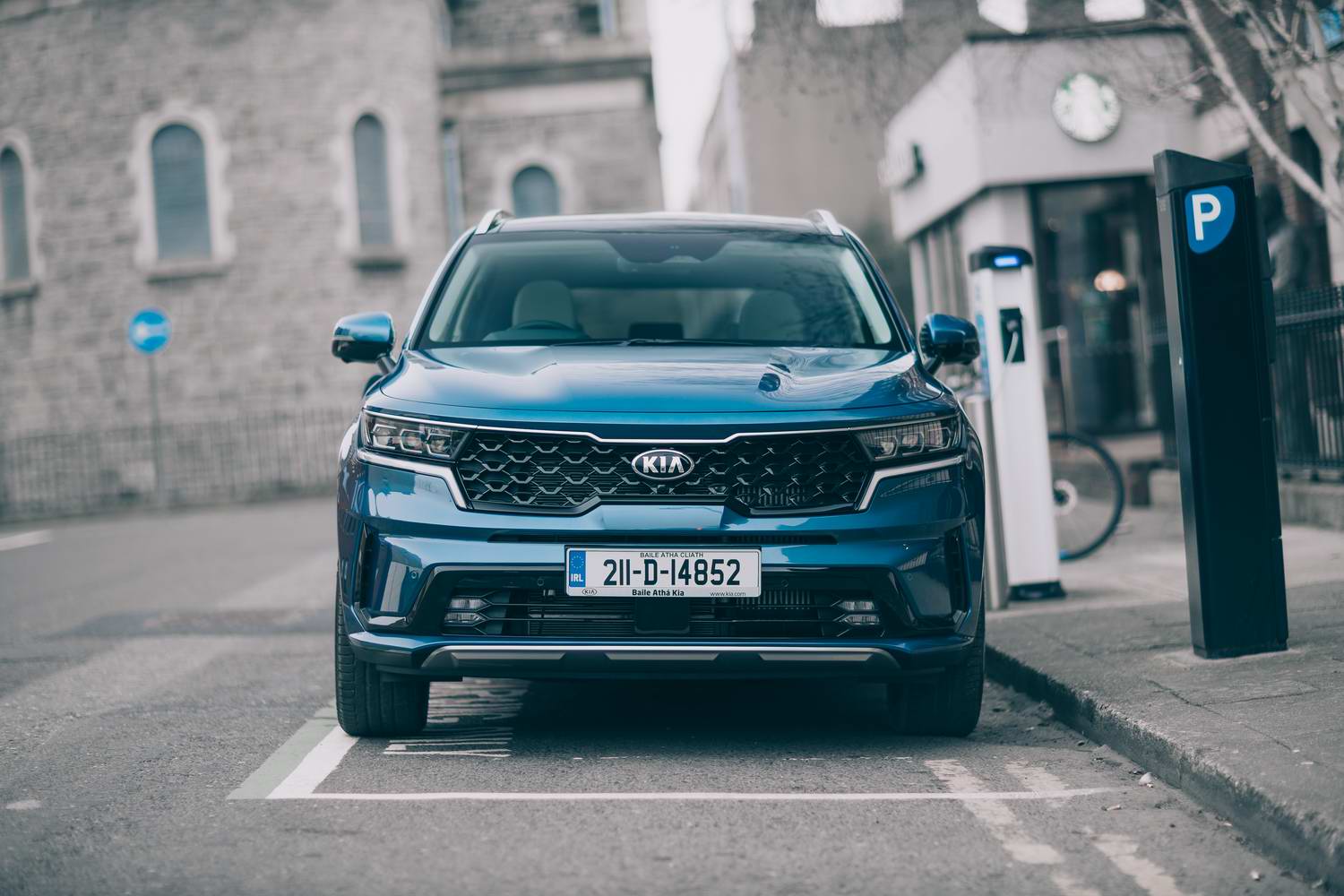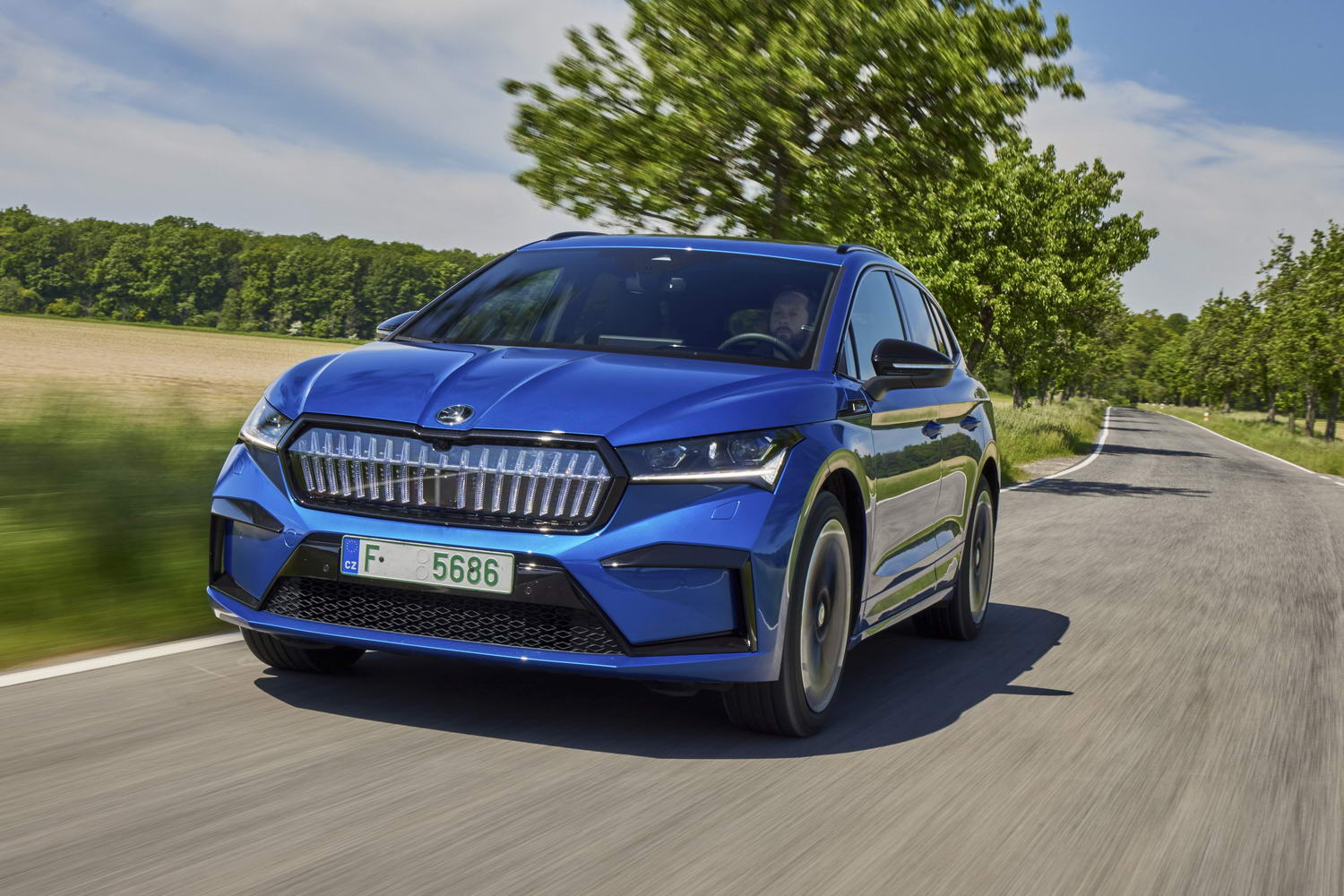In the case of the Skoda Kodiaq RS, the arrival of a midlife facelift for the SUV doesn't merely bring fresh exterior styling, but also the installation of a more powerful petrol engine in place of the previous model's diesel, which should transform how the car drives.
In the metal
The majority of the exterior changes focus on the front where Skoda has added a new bonnet design above a more pronounced grille, which, on this Kodiaq RS model, is black and carries RS badging.
New headlights retain the split design; however, the main unit is a slimmer one and on the RS features LED Matrix technology as standard. These new light units complement the sportier styling of the Kodiaq RS and include a daytime running light signature along their base. The result is the appearance of far slimmer headlights even though there isn't a significant difference in size.
A new lower front bumper emphasises the performance-themed nature and sets the RS further apart from the rest of the Kodiaq rage. Whereas previously the car had a broad gaping panel that spanned the front, this is now divided into three sections with gloss black inserts crowning the outer sections. This aspect of the exterior differentiates the RS from the popular Sportline version, too.
In an effort to gain efficiencies wherever possible, Skoda has introduced a new 20-inch wheel design that is aerodynamically optimised and largely enclosed. The additional inserts attach to the alloy wheel and give it quite a distinctive appearance when stationary.
Elsewhere the RS gets gloss black door mirrors, window surrounds, roof rails and badges on the rear. A larger roof spoiler continues the gloss black look and contributes to improved aerodynamics according to Skoda. The Kodiaq RS also gets LED taillights with dynamic indicators, twin exhaust pipes and a reflector strip across the full width of the car.
Skoda continues to showcase its attention to detail on the interior where there is a generous amount of contrasting red stitching along the armrest, across the dashboard top and throughout the sports seats. These offer electric adjustability and impress visually, too. They do a good job of supporting the occupant without being overly confined - this is a family-sized SUV after all, not a small hot hatch.
Rearwards, the middle row continues to provide ample space for its passengers and the provision of a third row boxes allows the carrying of two more passengers should the need arise.
When these rearmost seats aren't in use it's worth folding them flat into the floor to create a large cargo volume of up to 835 litres, depending on the position of the adjustable middle row.
Driving it
Typically, when a model comes in for its mid-cycle refresh, it's not uncommon for the manufacturer to release a few extra horsepower. But with the Kodiaq RS, Skoda has opted for an entire change of power unit, ditching the 2.0-litre diesel engine in favour of a turbocharged 2.0-litre four-cylinder petrol unit that does service in several other performance models throughout the Volkswagen Group.
Some may have mixed feelings on the change, as the diesel did provide a 500Nm swell of torque, enabling strong performance without the need to rev the engine. In contrast, the new petrol engine 'makes do' with 370Nm, although the power output rises by 5hp to 245hp, arriving at a loftier 5,250rpm. Along with a more freely revving engine, the overall powertrain weight reduces by 60kg, which benefits the Skoda's handling.
The Kodiaq RS gets an electrically assisted variable ratio steering setup as standard. Feedback through the three-spoke flat-bottomed steering wheel isn't overly detailed, but through the tight switchbacks and sinuous roads of our test route it rarely gave cause for complaint.
Skoda's engineers have also avoided the trap of adding too much artificial weight to the steering in its Sport setting. There is some increased engine noise, which at times sounds better outside rather than inside the car, but either way it's an improvement over how the previous diesel engine's tone was augmented.
At speed, the Kodiaq feels lighter, and the combined revisions to the suspension to accommodate for the alteration in weight add to the heightened sense of agility. Yes, this remains a large seven-seat SUV, but there's a different character to it now. Whereas its predecessor enjoyed that lazy surge of performance thanks to its latent torque, the petrol unit delivers a crisper and slightly more urgent response to throttle inputs.
For the everyday stuff it is predictably smooth and quite refined with no obvious sense of the reduction in torque. Granted, I was driving alone in the car and it's obvious that a full complement of passengers is sure to reduce this performance.
Gear shifts come as smoothly as ever thanks to the seven-speed dual-clutch DSG automatic gearbox. Switching up to the Sport mode sees it cling onto each gear ratio a little longer. However, the DSG is prone to occasional moments of confusion leading you to revert to using the paddles behind the steering wheel.
Cruising at motorway speeds demonstrates both the refinement of the Kodiaq RS and the balance in its suspension setup that manages comfort without sacrificing body control. It's in this scenario where some will rue the switch away from diesel, as any sudden demand for performance reveals how much harder the petrol engine has to work, dropping gears and jumping further up the rev range whereas the diesel accelerated with less fuss.
Considering that in some guises this engine can operate at upwards of 300hp, sticking with a 245hp unit as Skoda has, for whatever reason, seems held back a little. That aside, for the majority of the time the petrol engine serves the Skoda well and improves the overall driving experience.
What you get for your money
Despite making the Kodiaq RS much better with the introduction of a petrol engine it isn't going to be officially on sale on the Irish market this time around. The higher emissions figure is likely to be one of the factors in Skoda Ireland's decision. With outputs of between 195- and 203g/km, depending on specification, it would have cost between €790 and €1,250 per annum in motor tax alone, and its VRT figure would have meant a high purchase price.
Summary
There is only so much you can do to a large seven-seat SUV to make it feel like a performance car, especially with just a 2.0-litre petrol four-cylinder engine under the bonnet, but Skoda has made the Kodiaq RS a far nicer car now than when it initially debuted. It may not have as much torque, but the weight reduction and character of the petrol engine makes it a far better car second time around.

